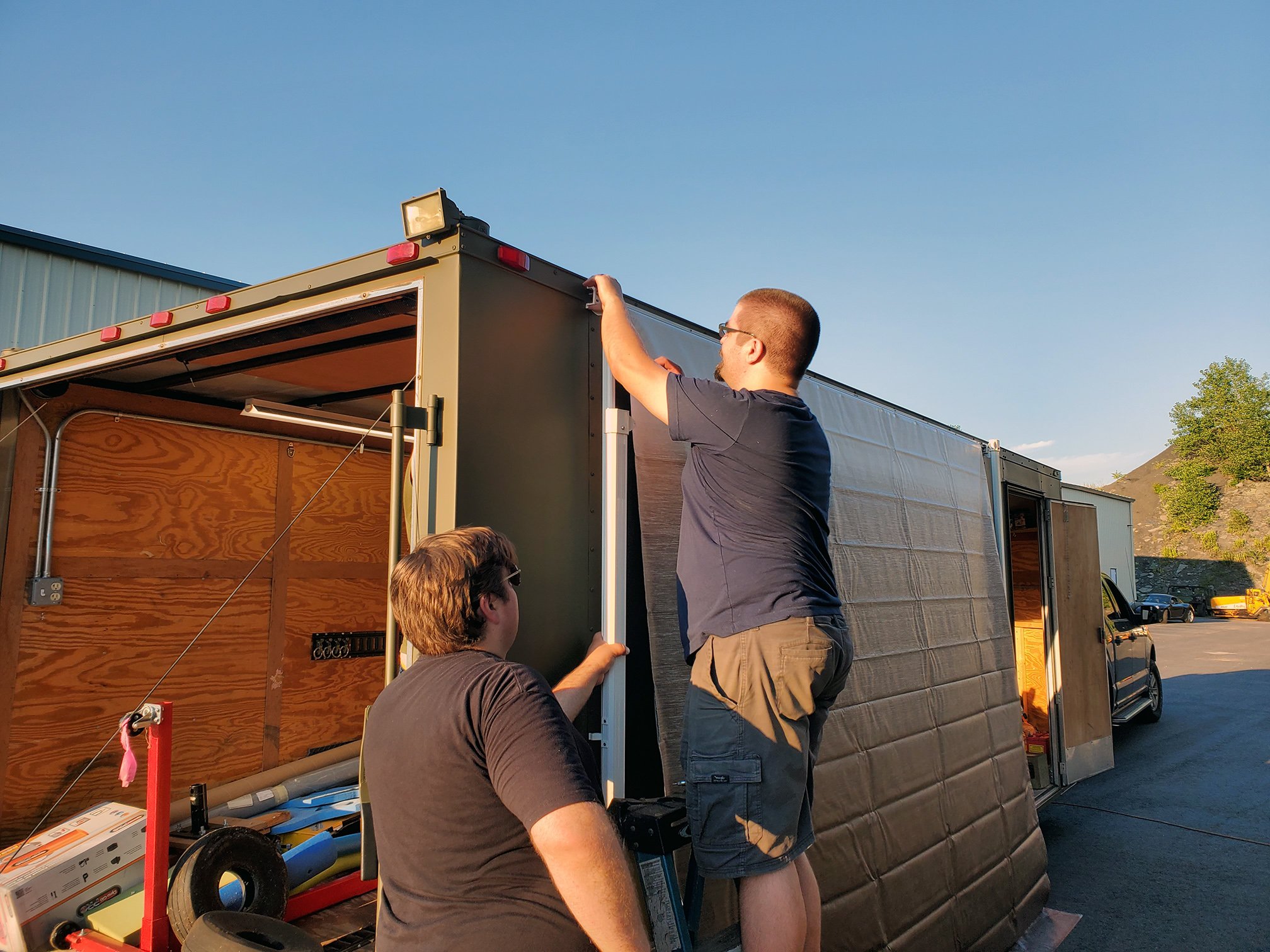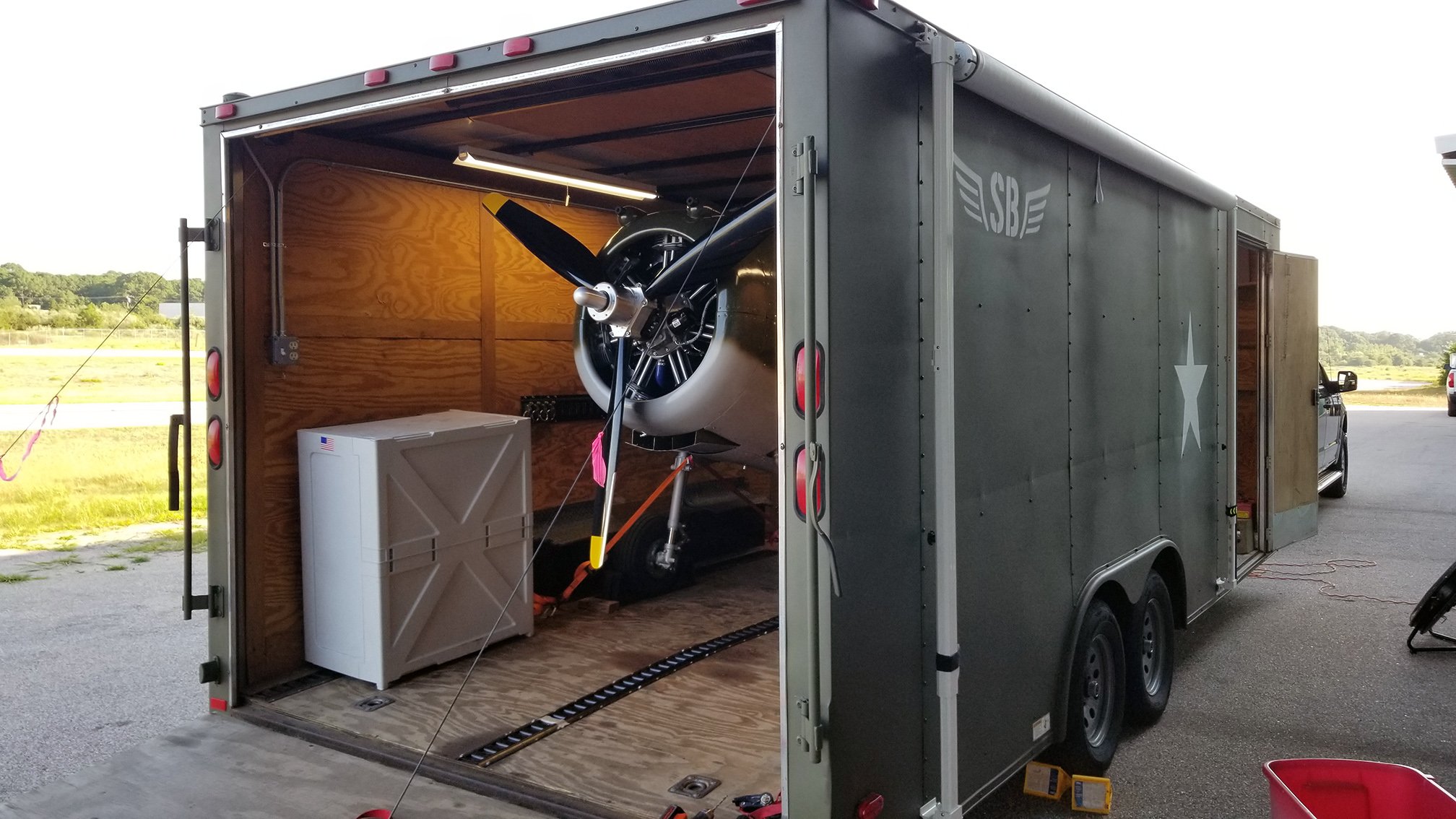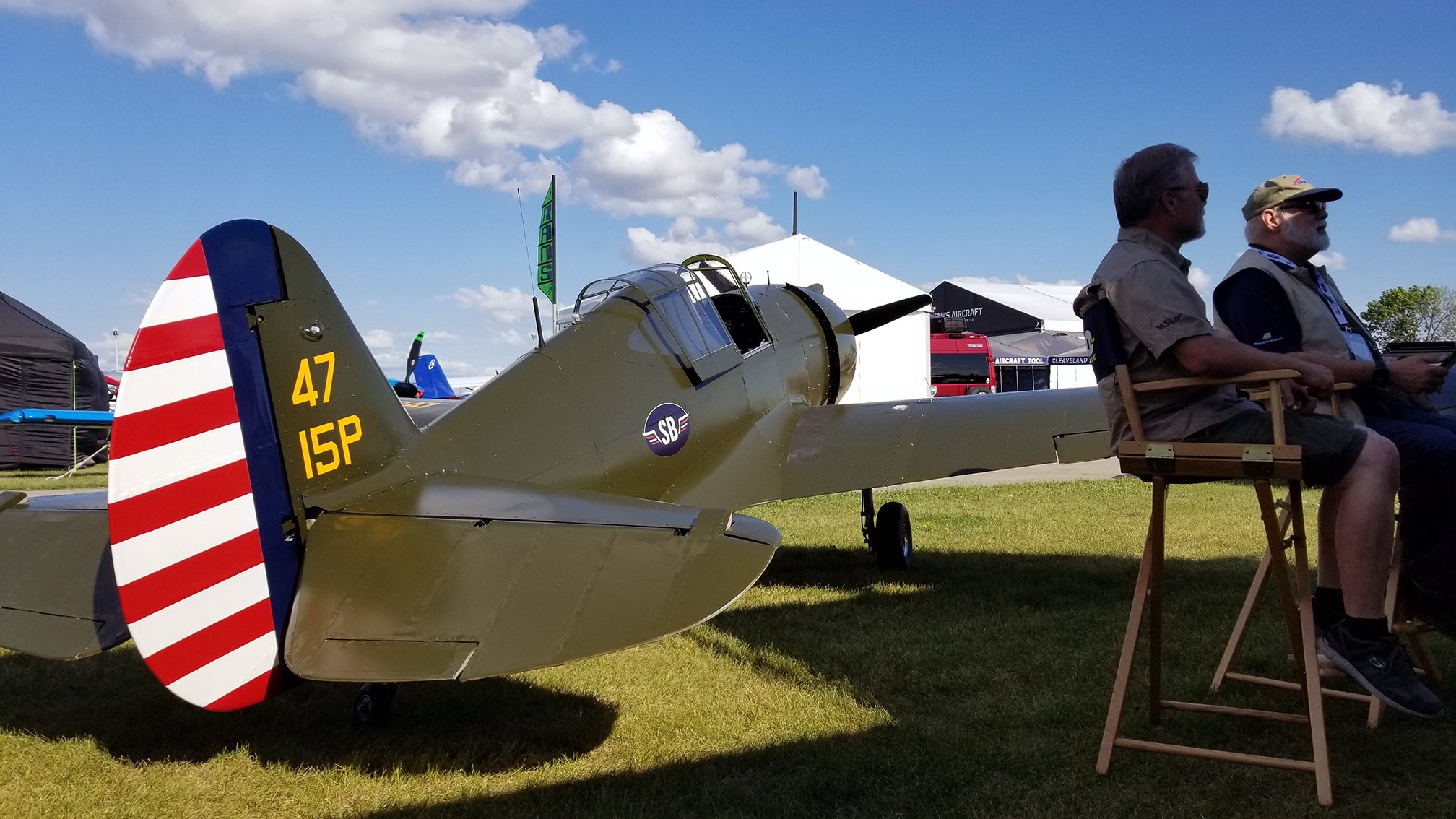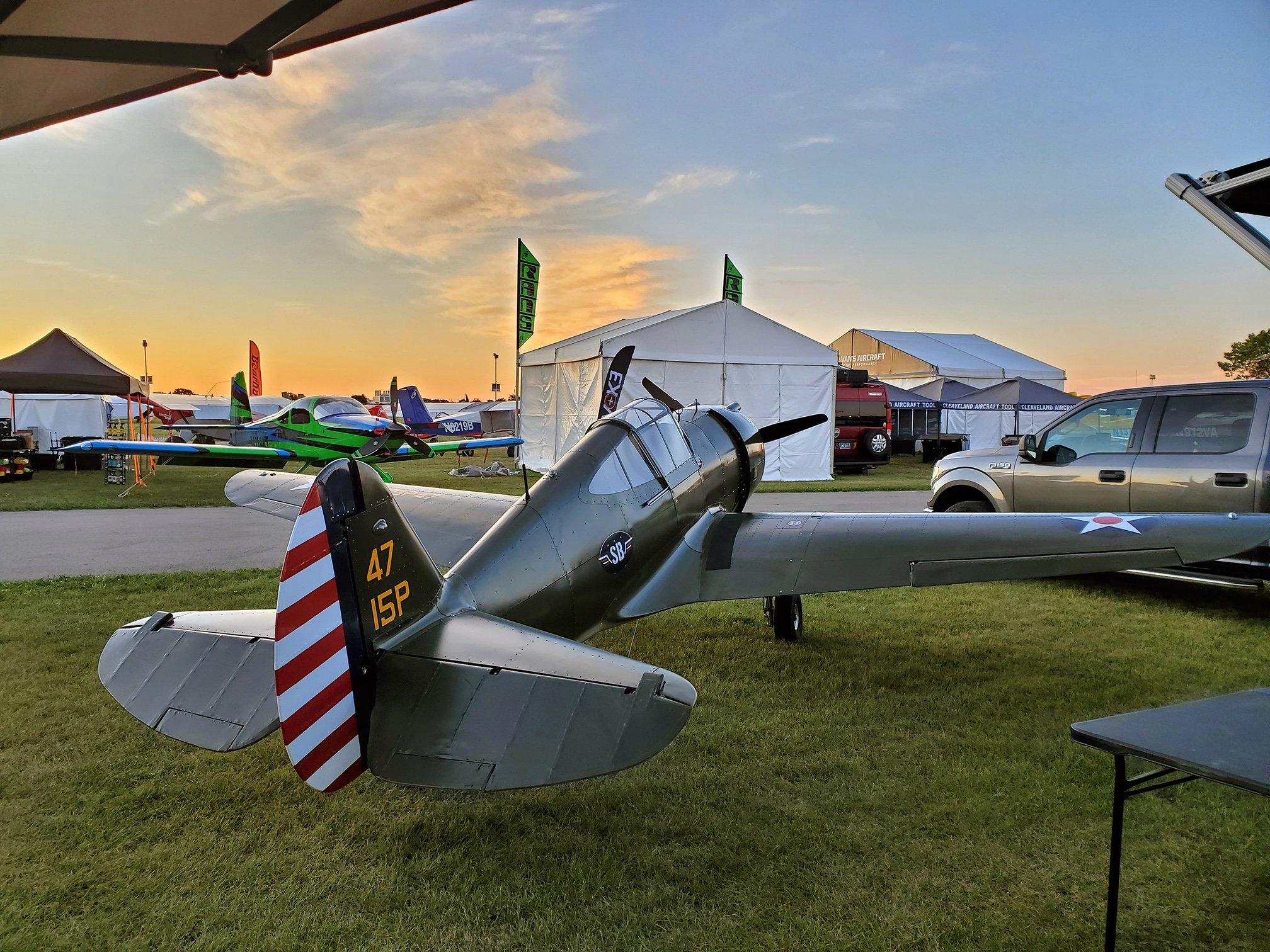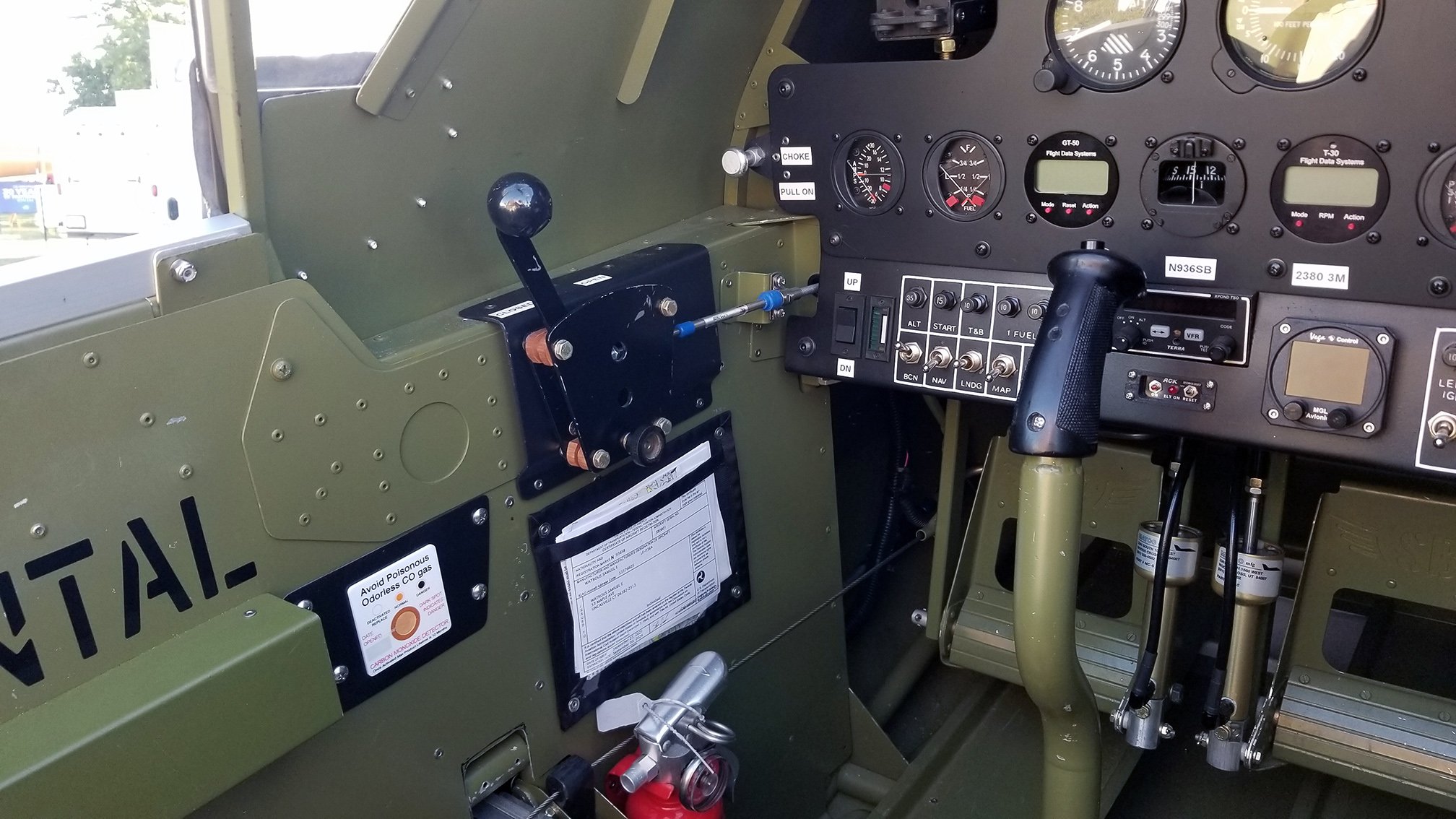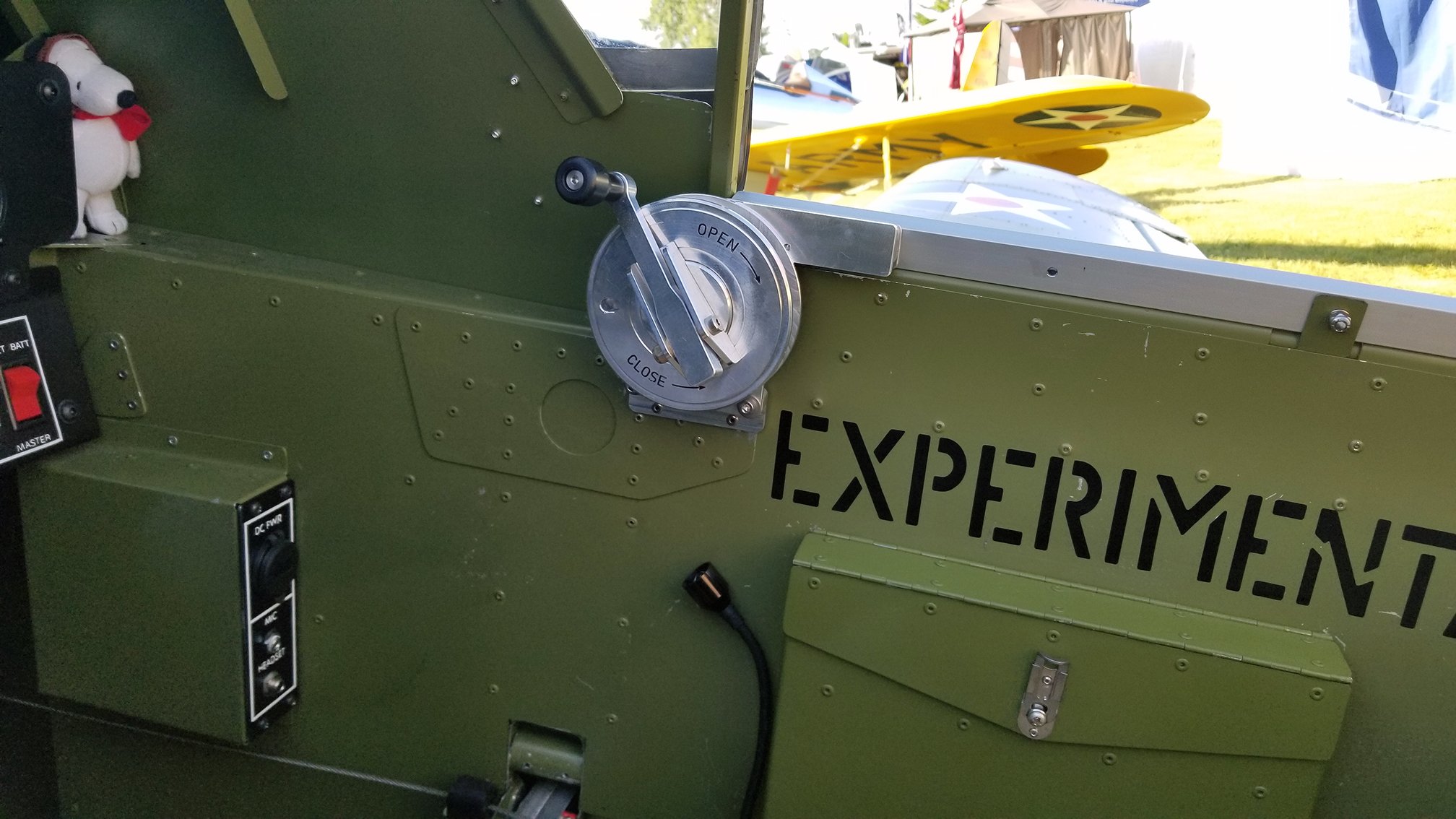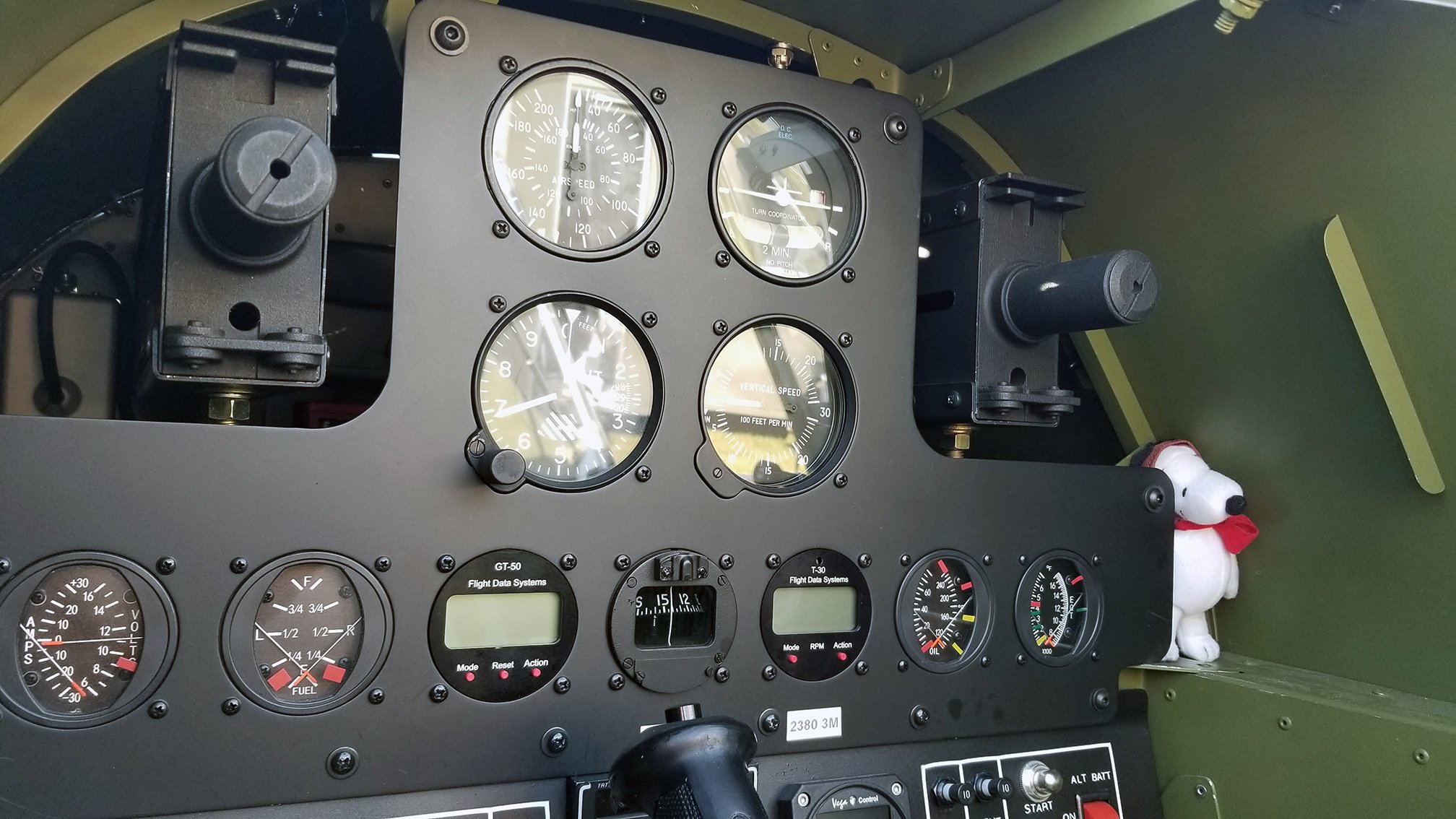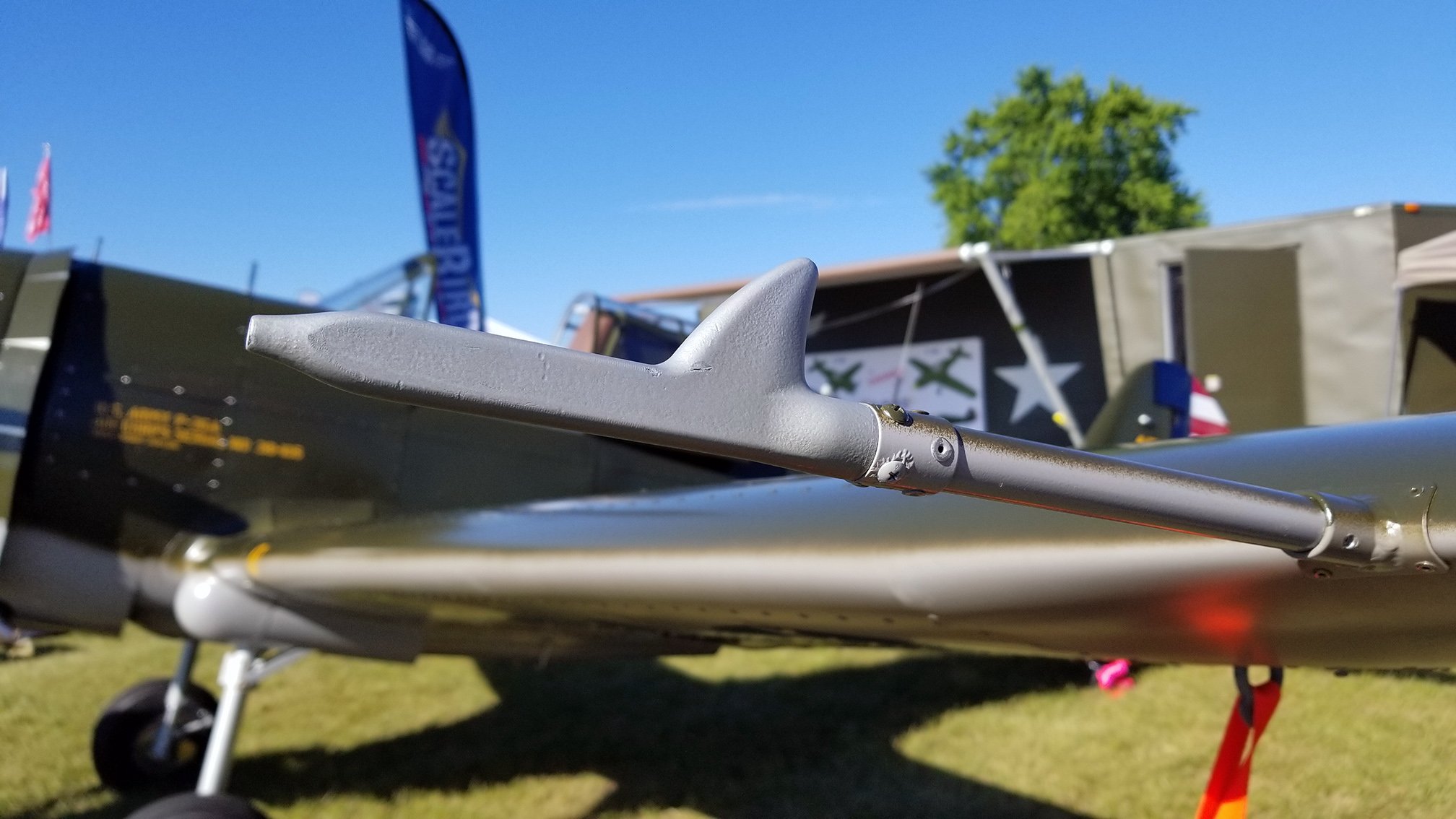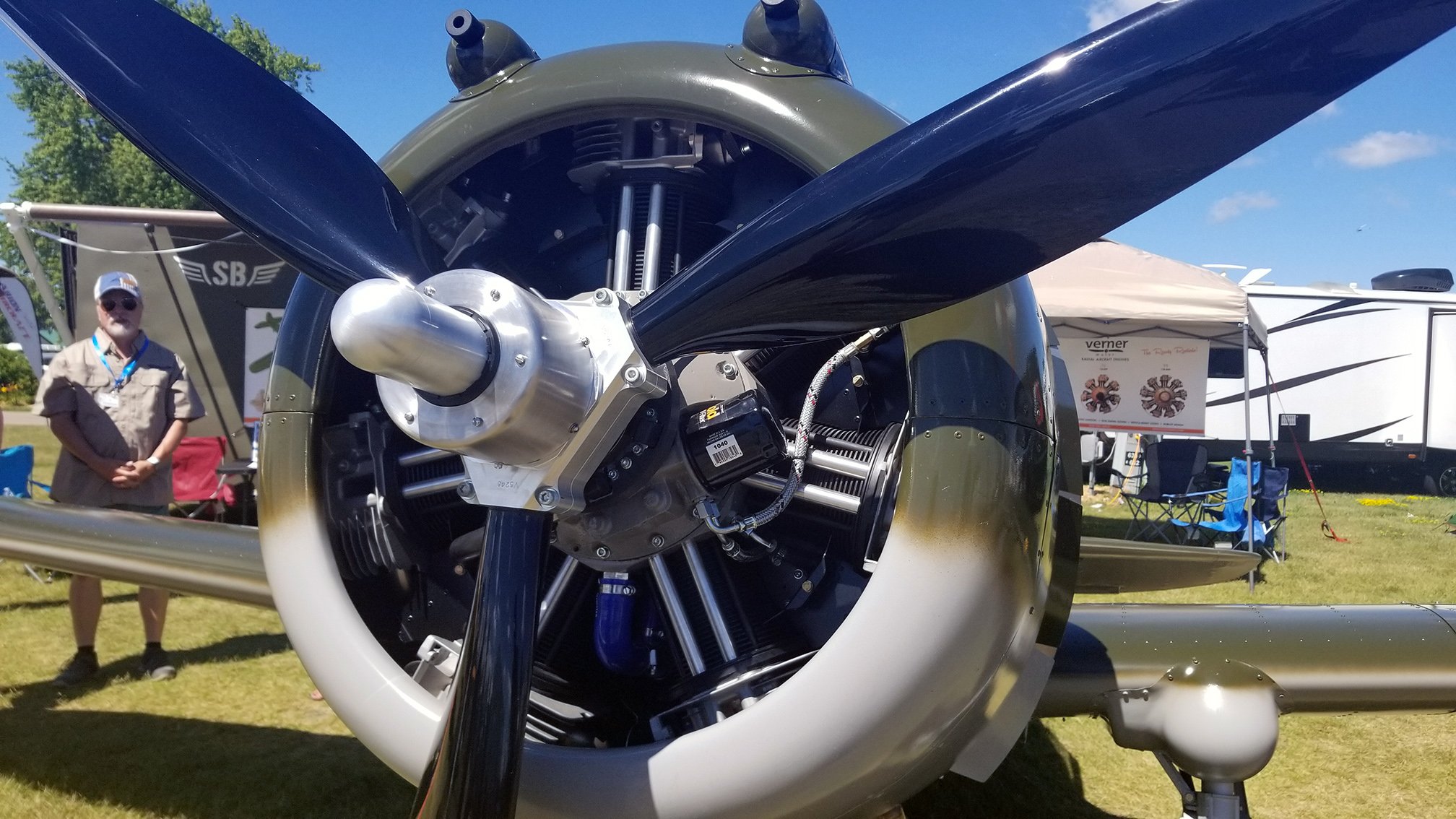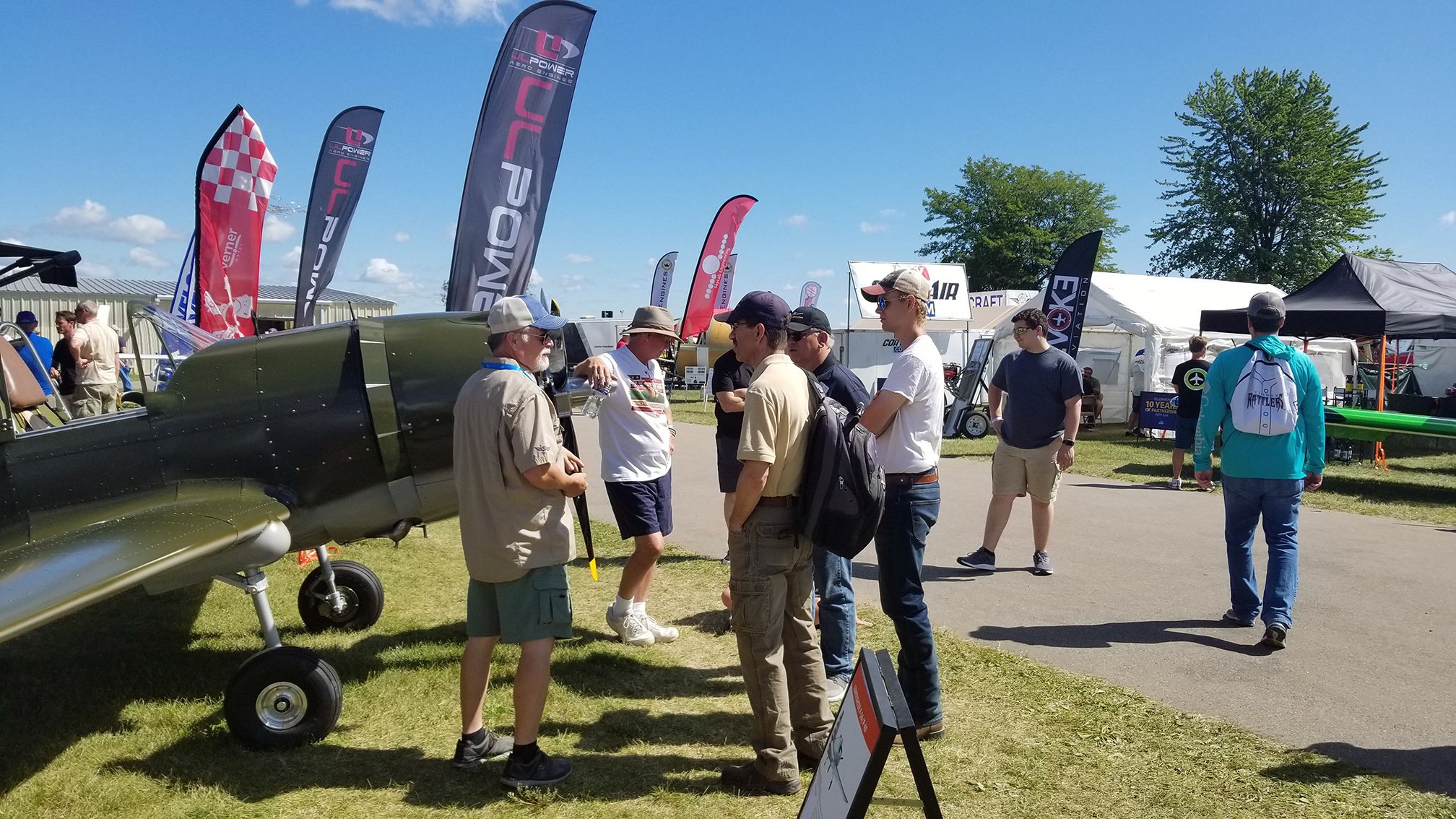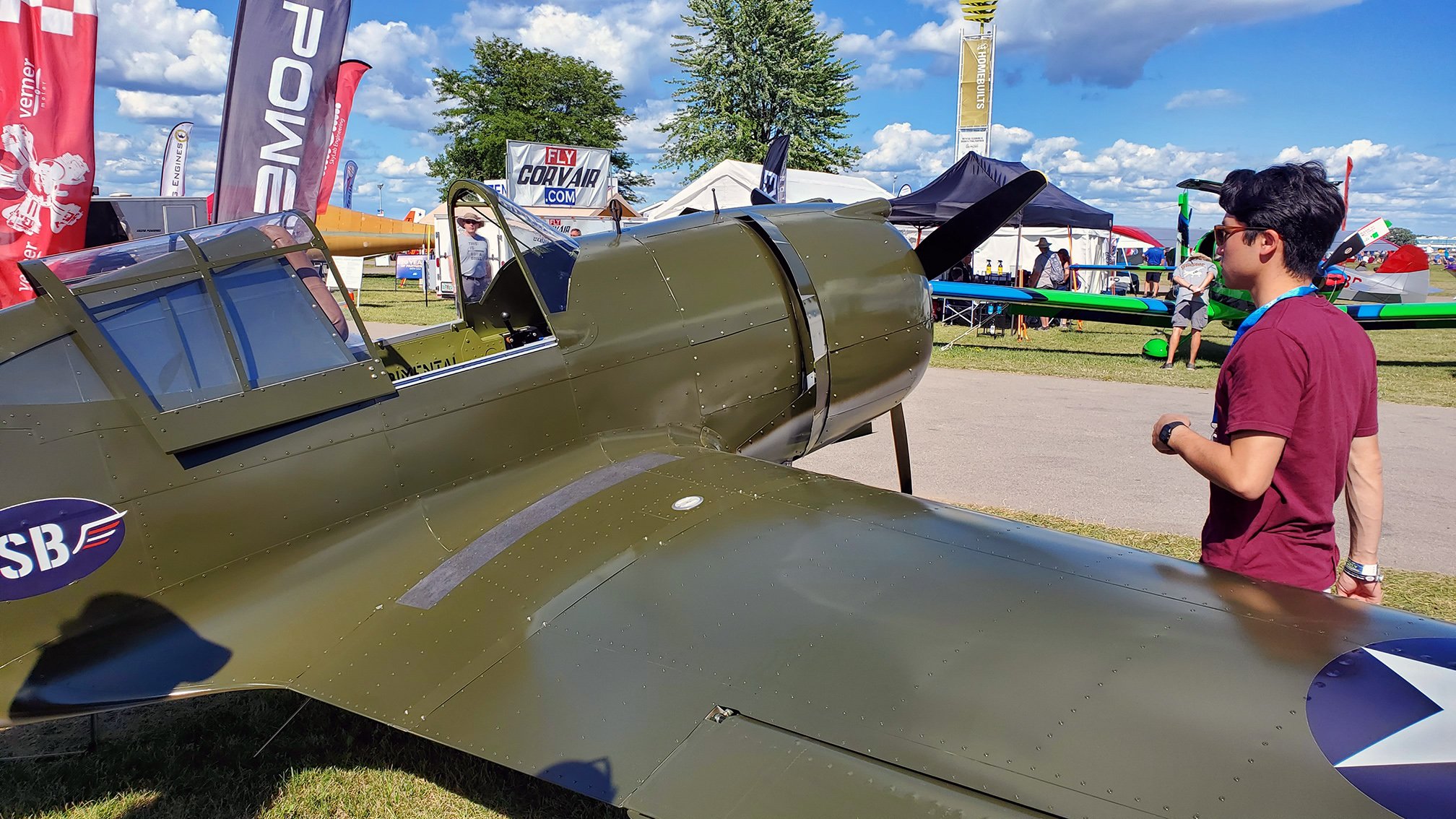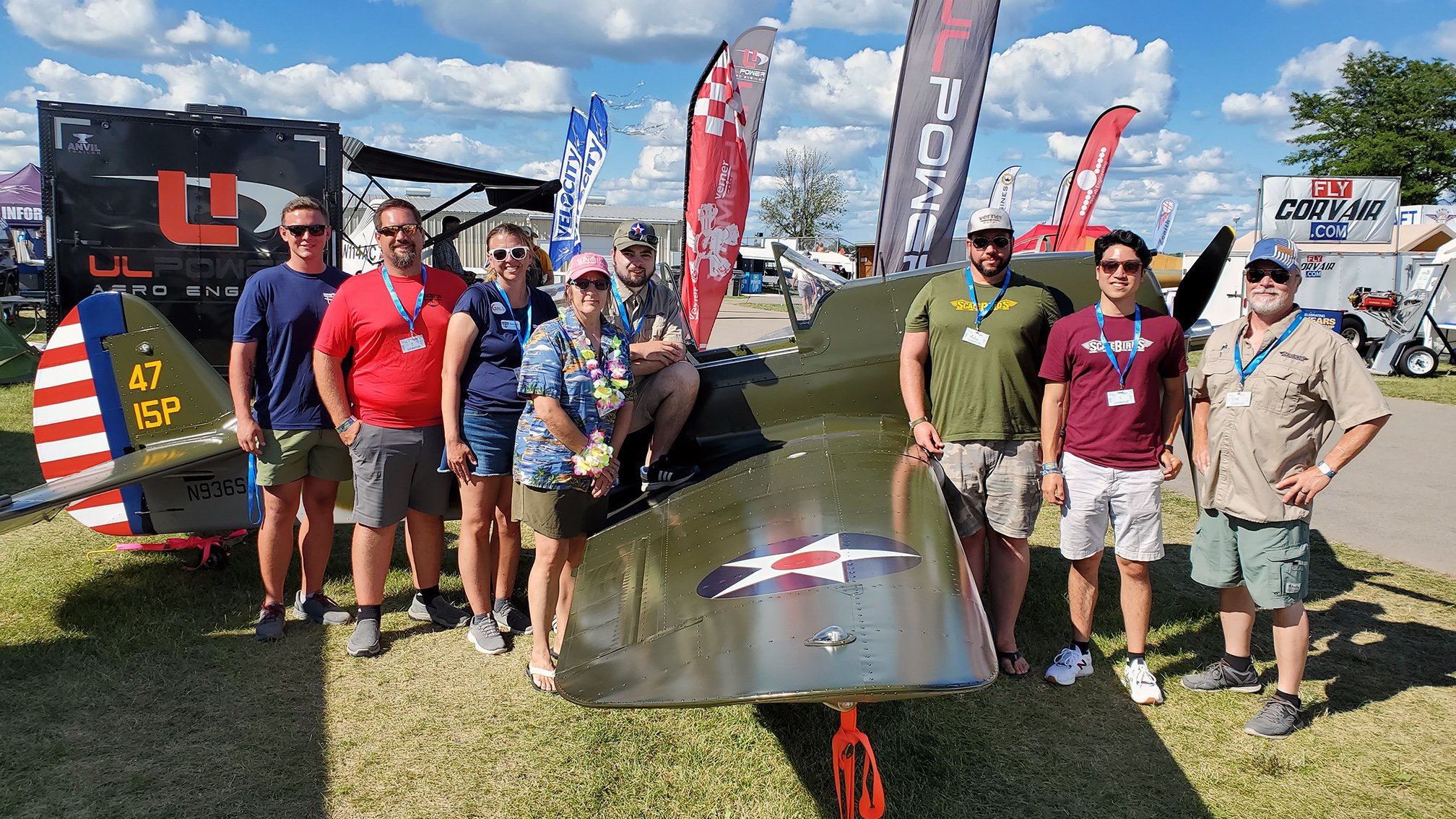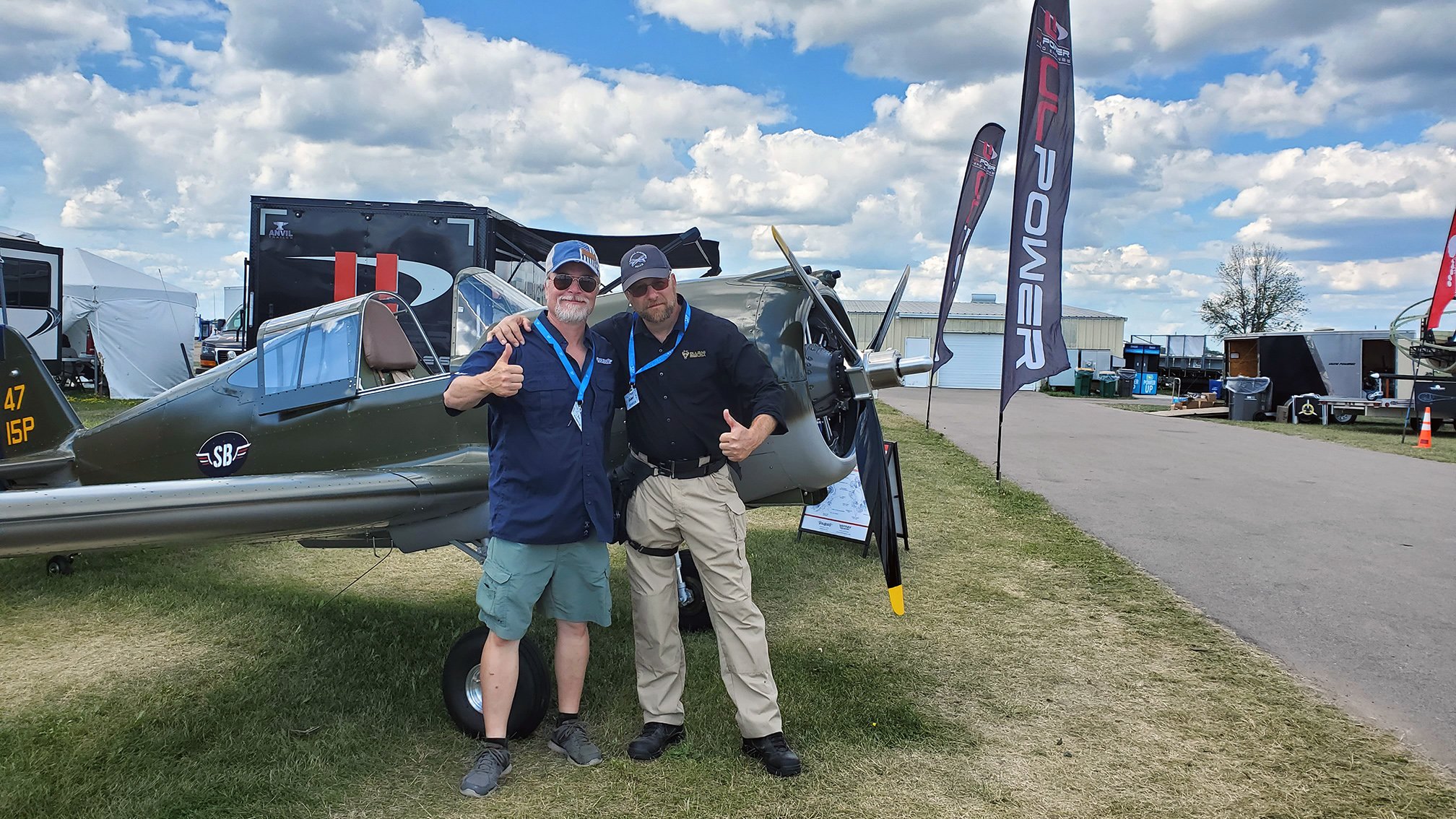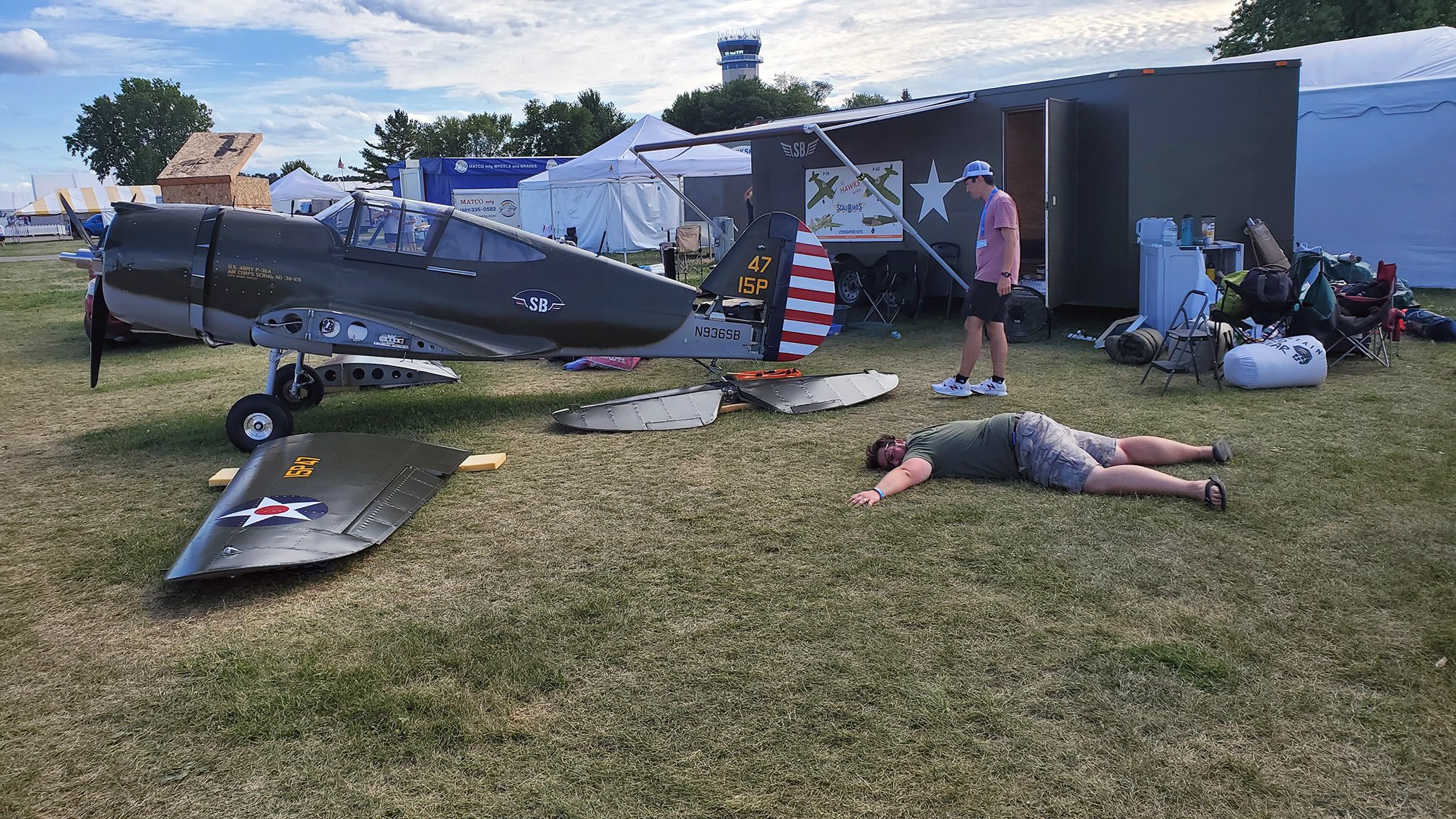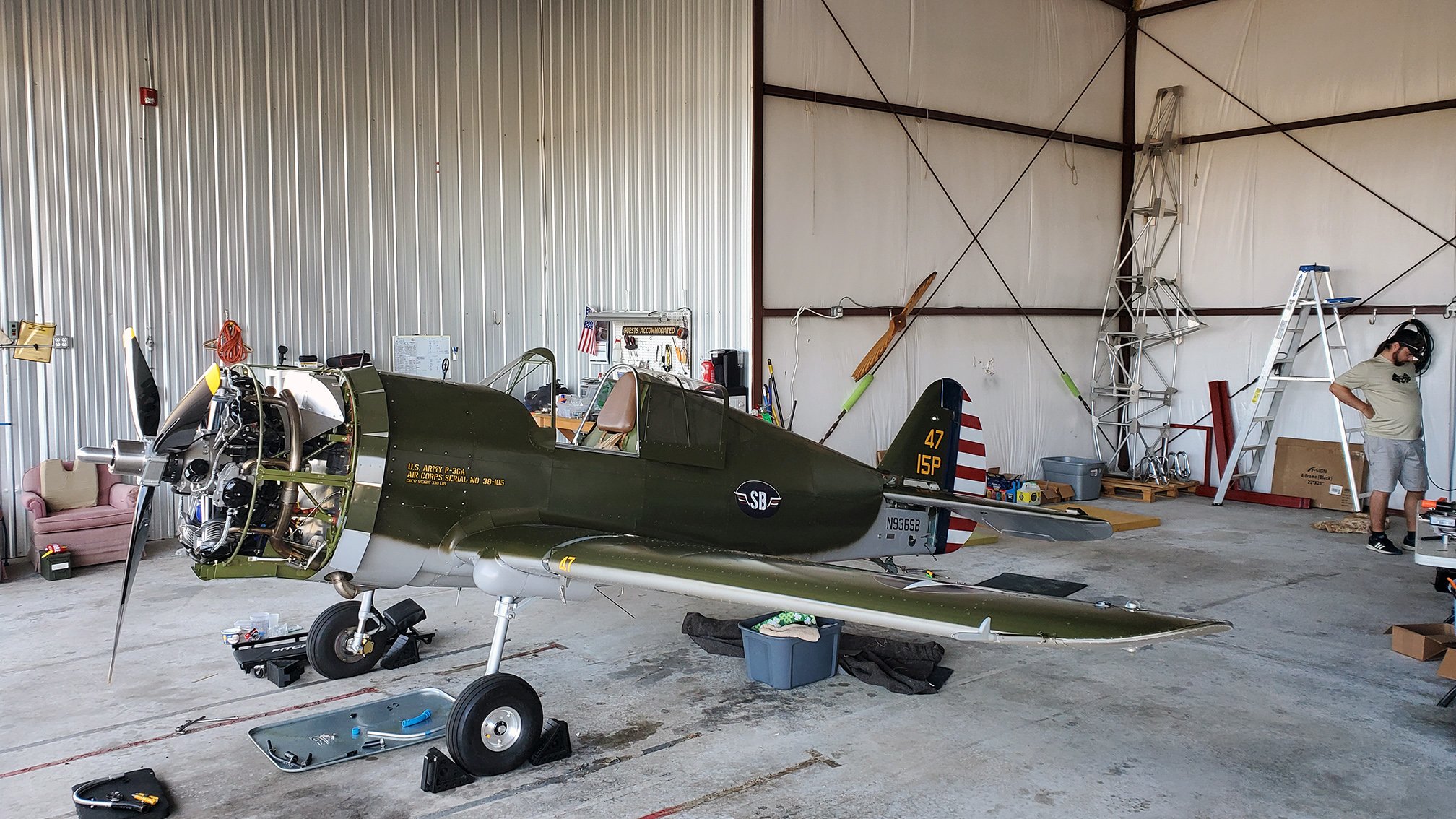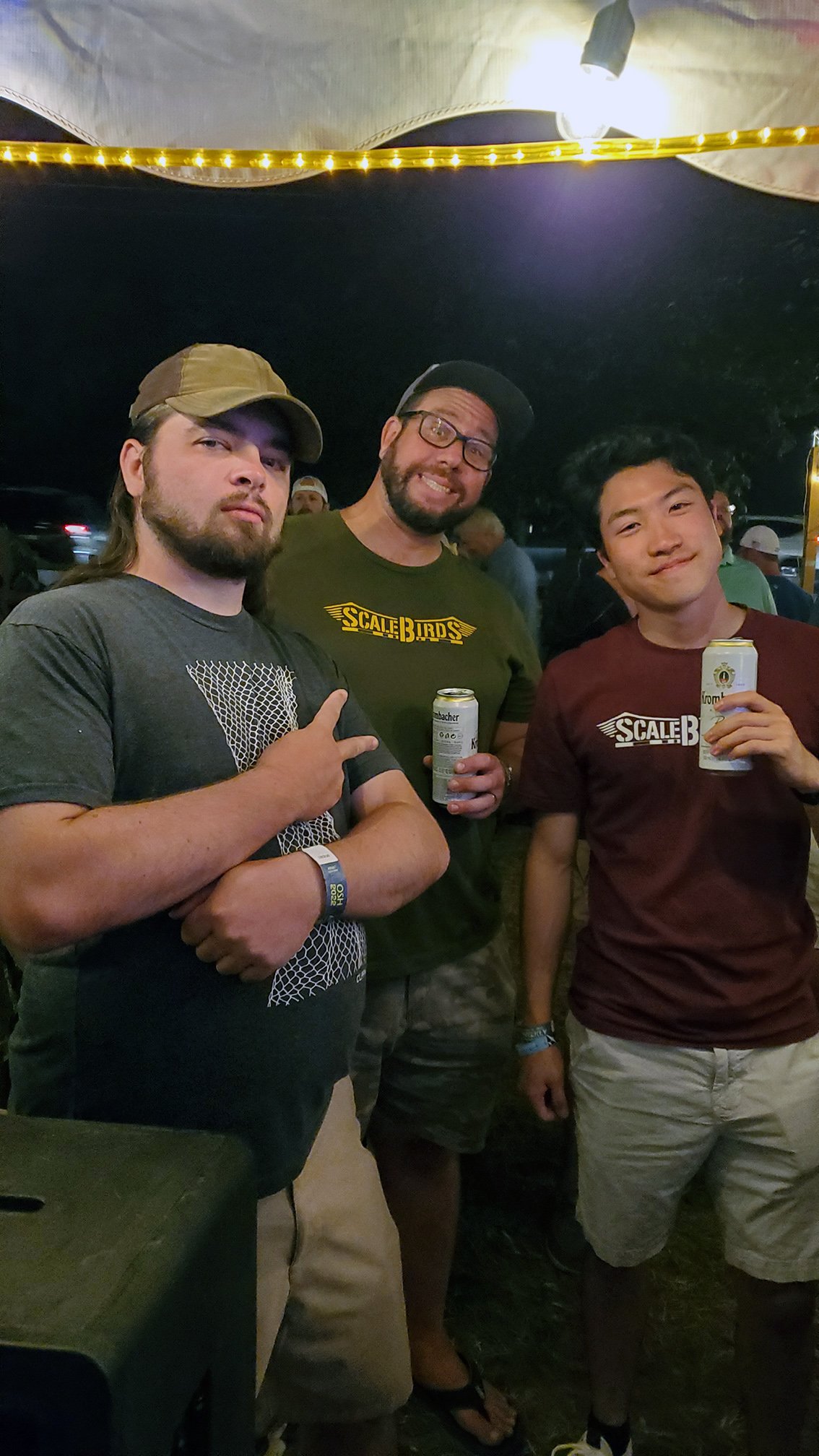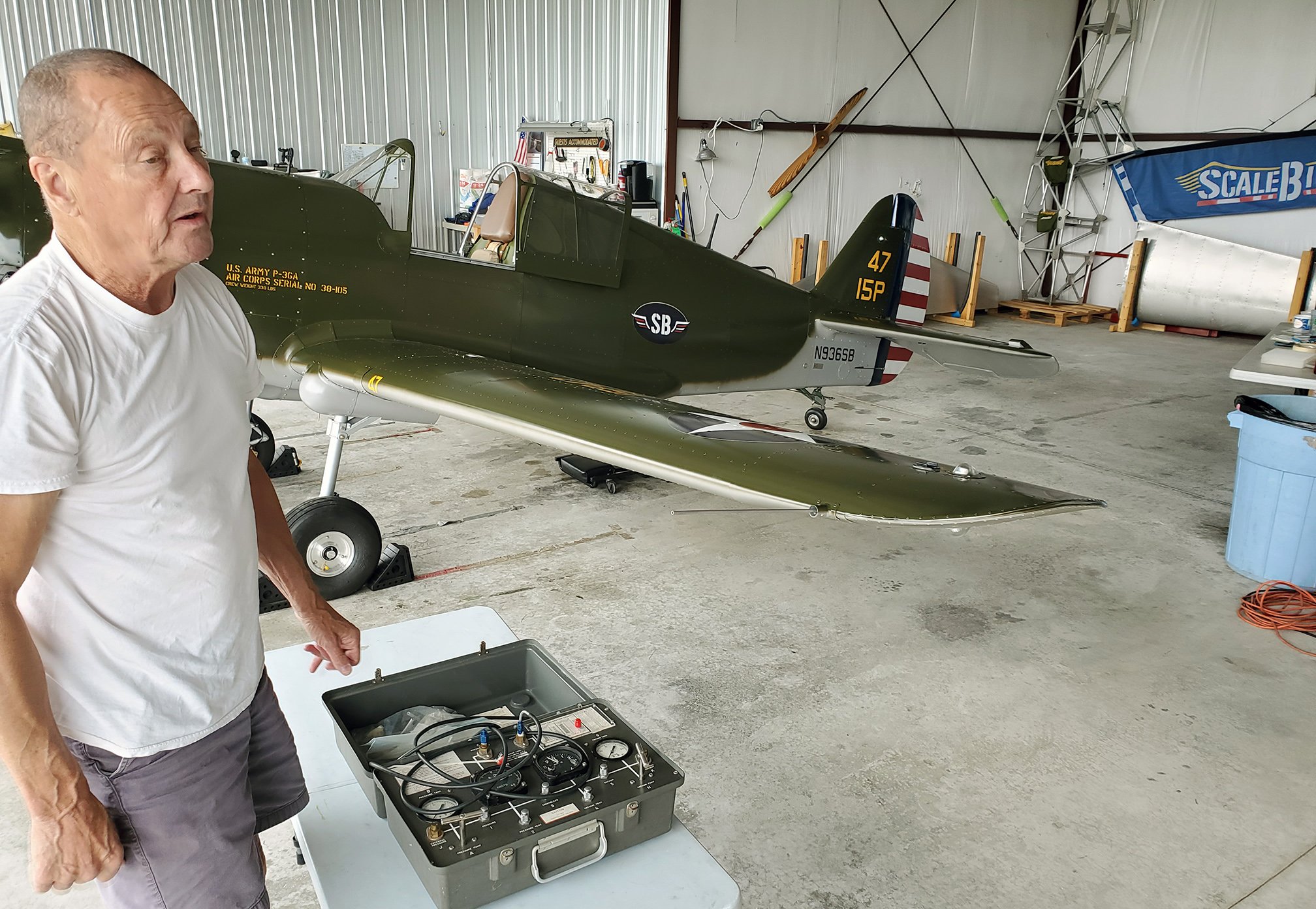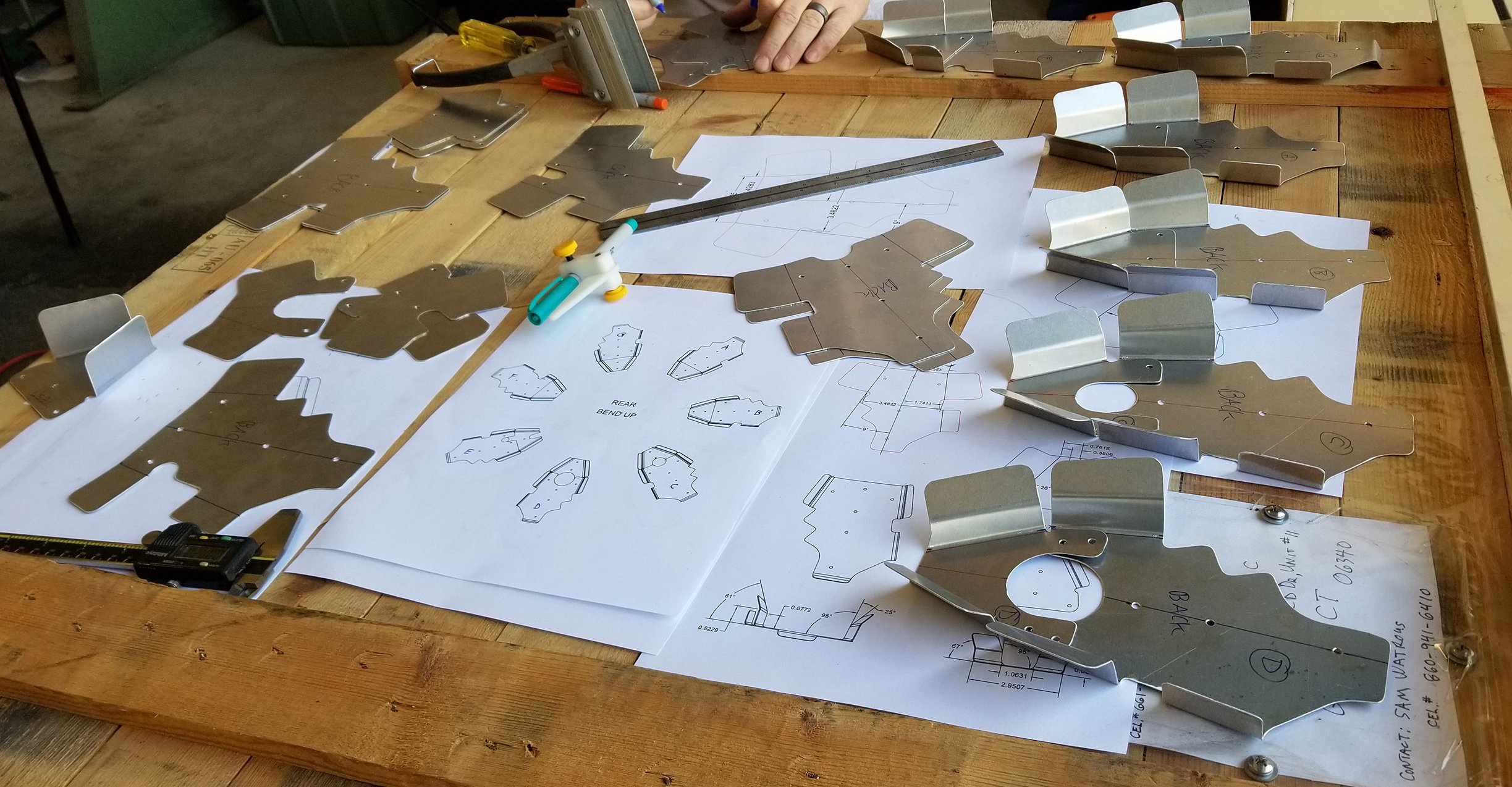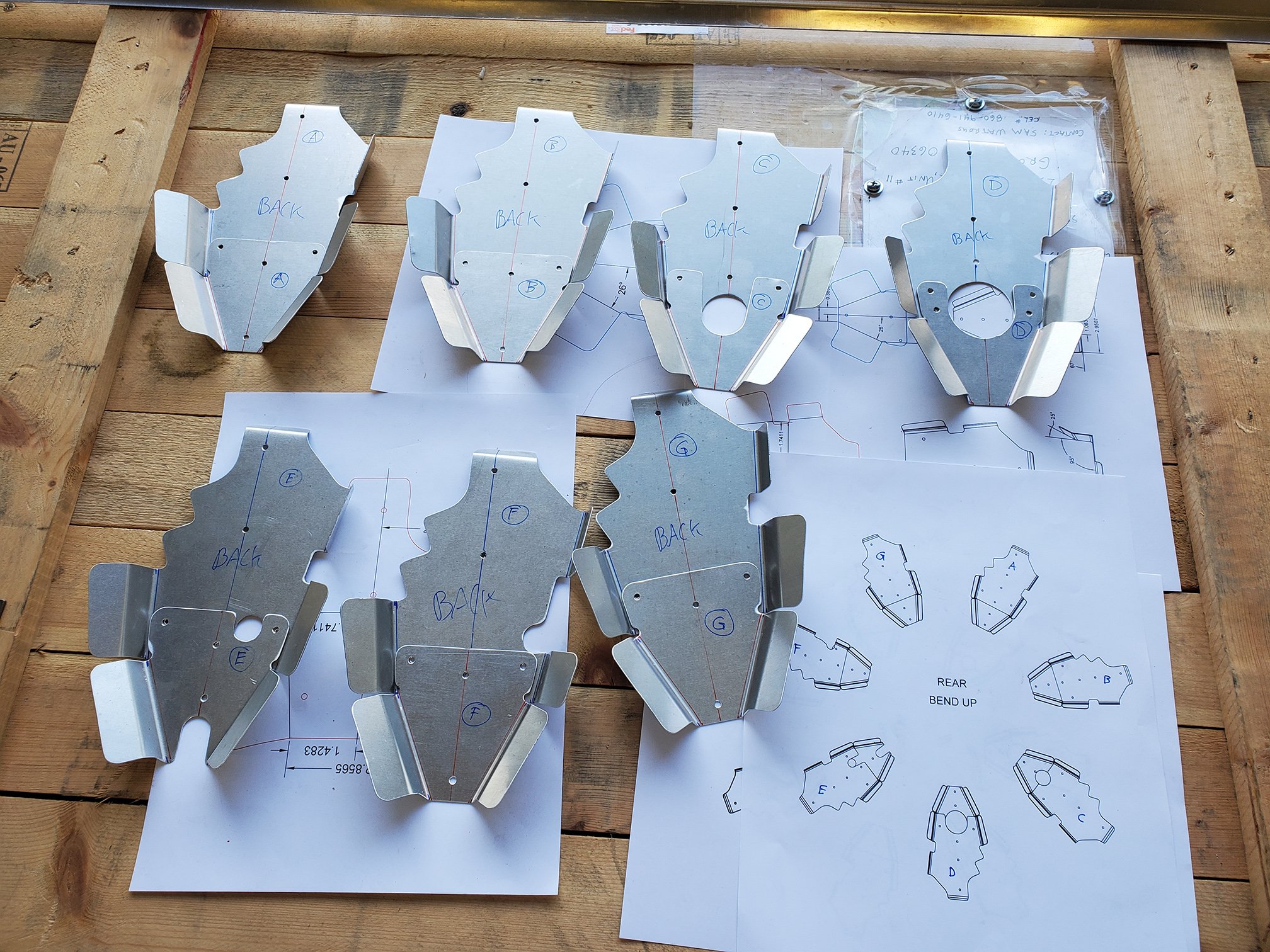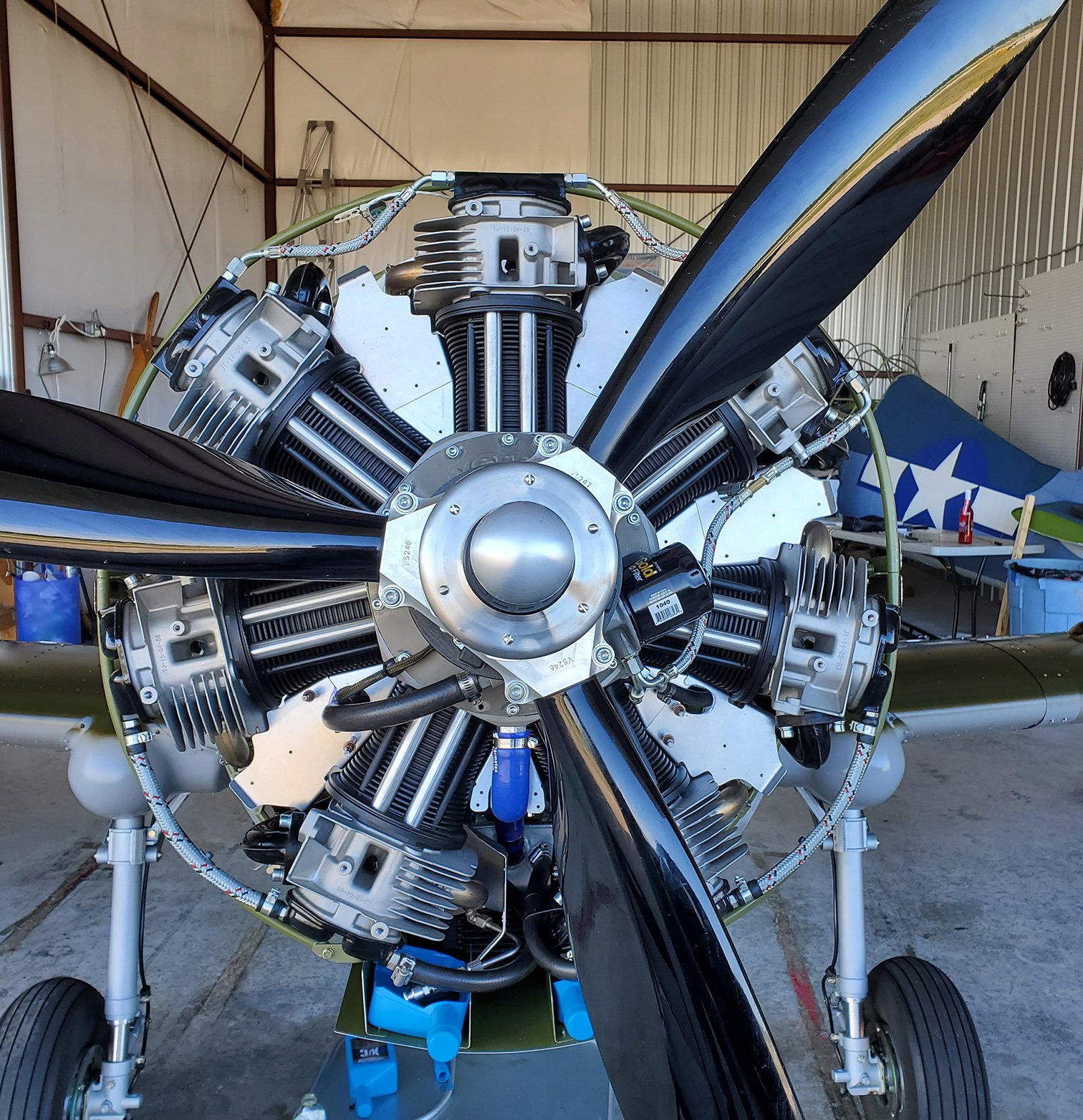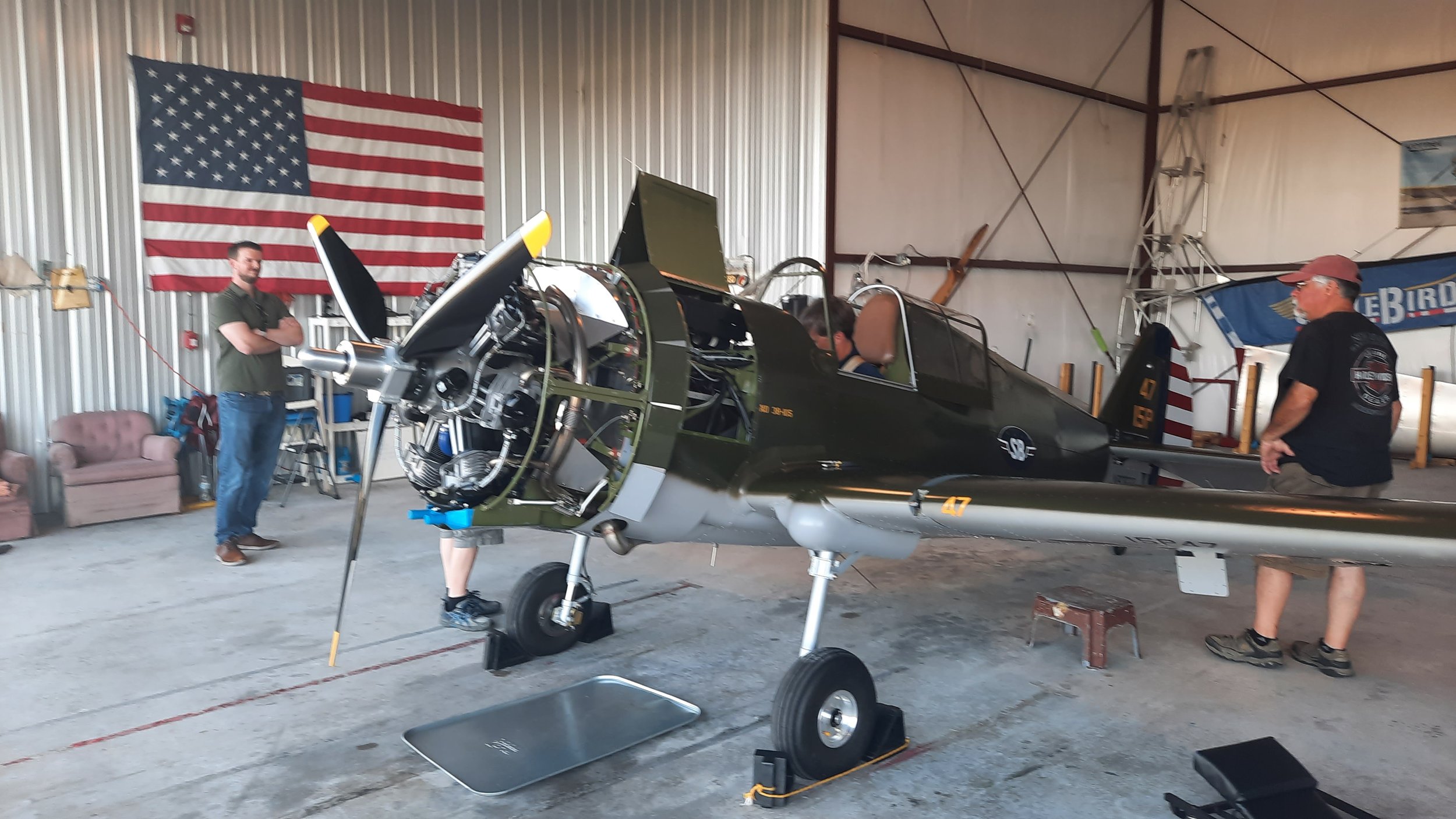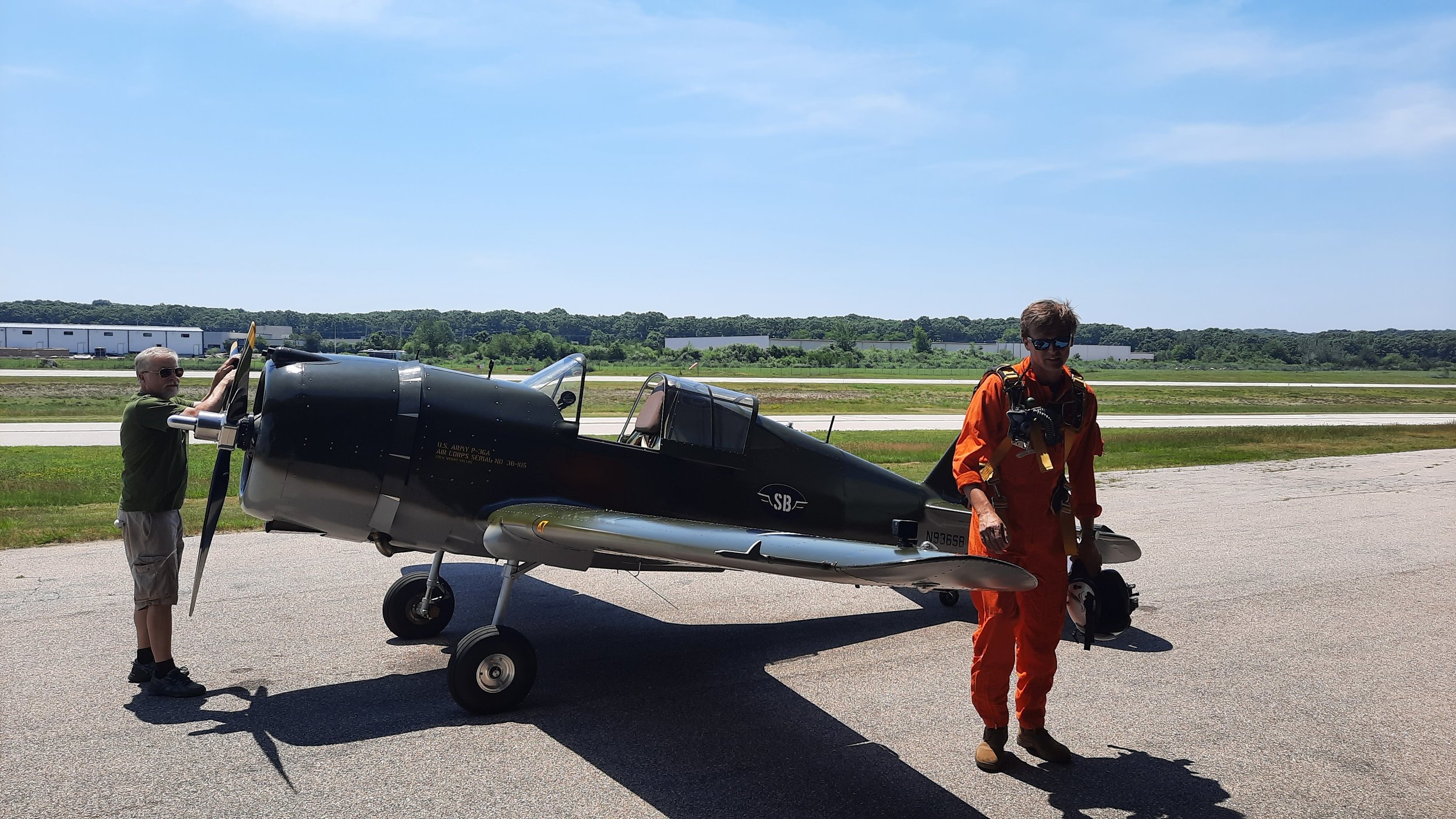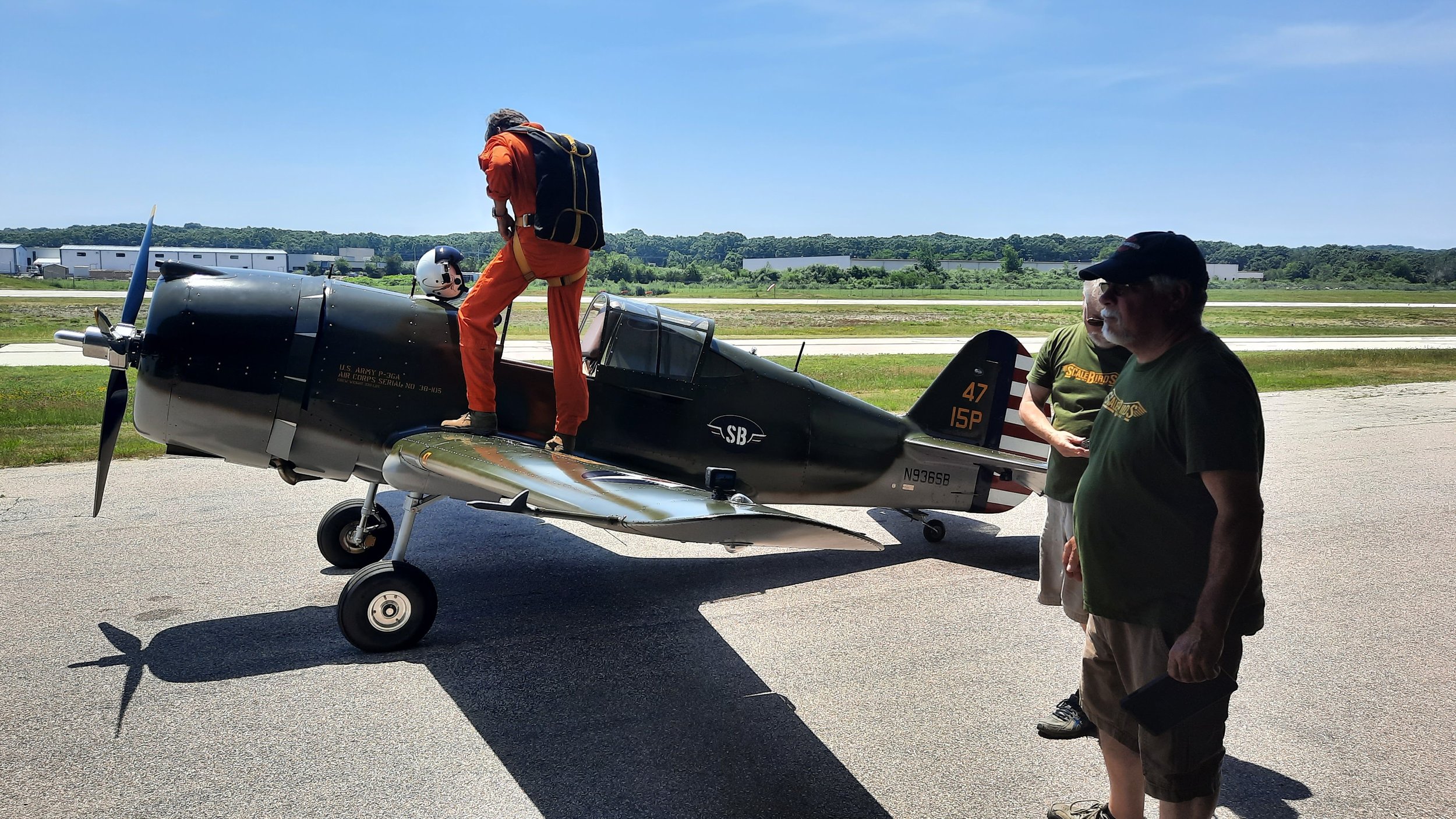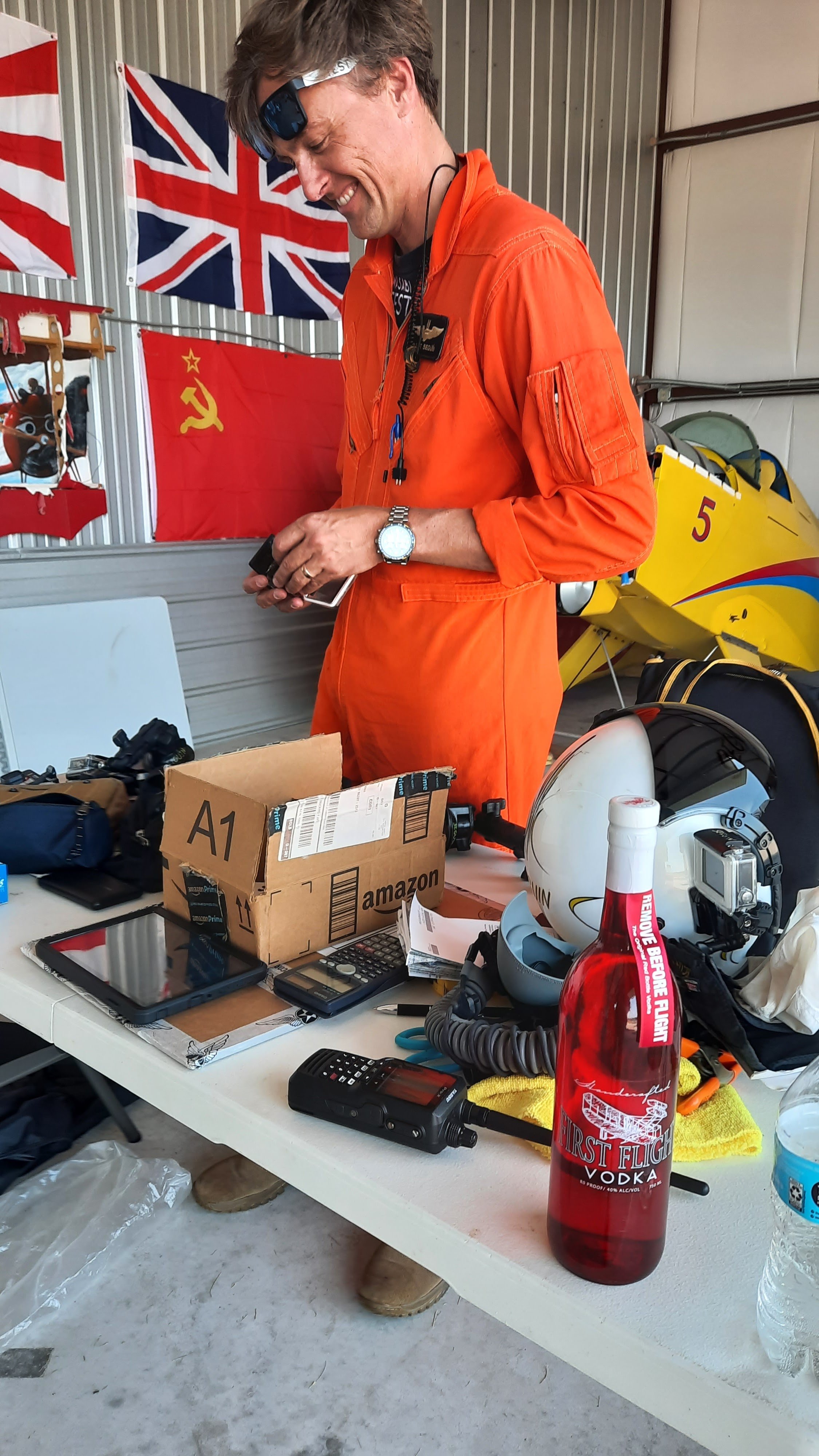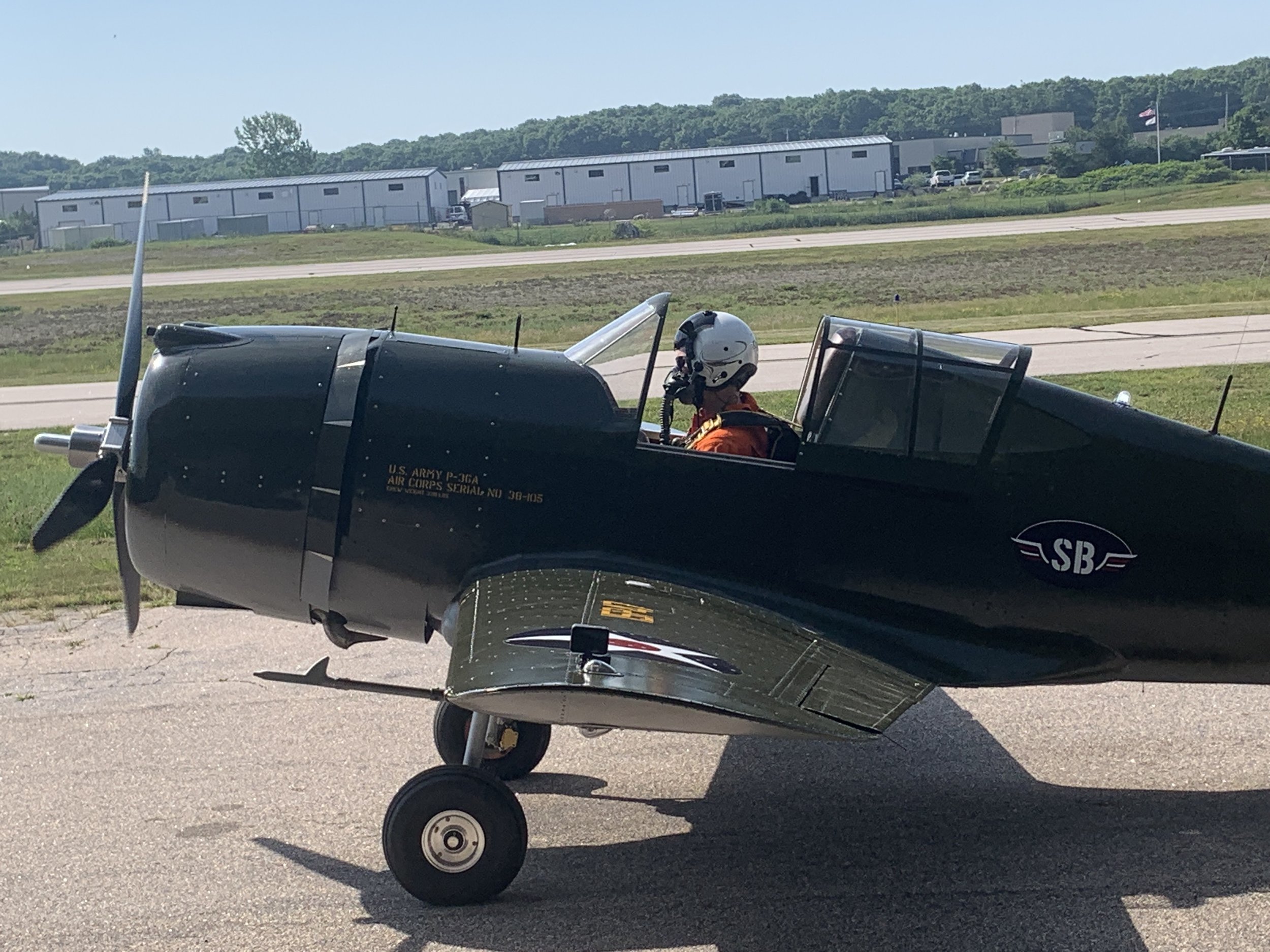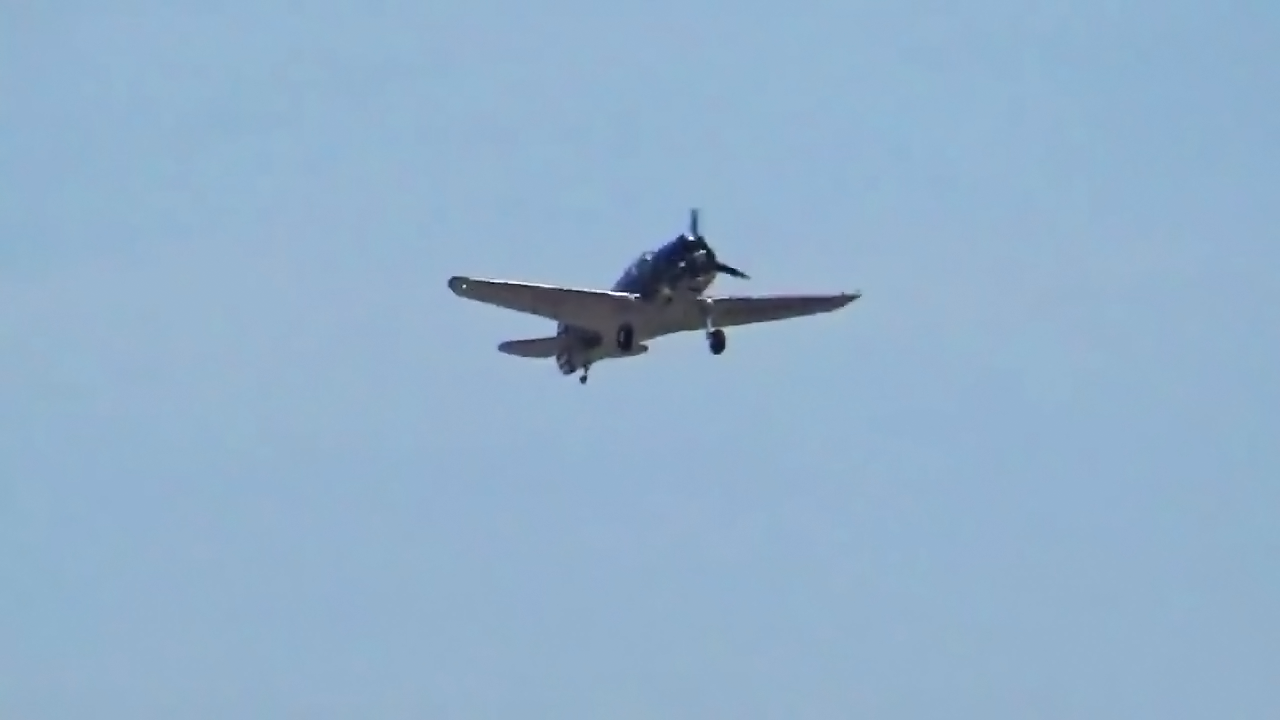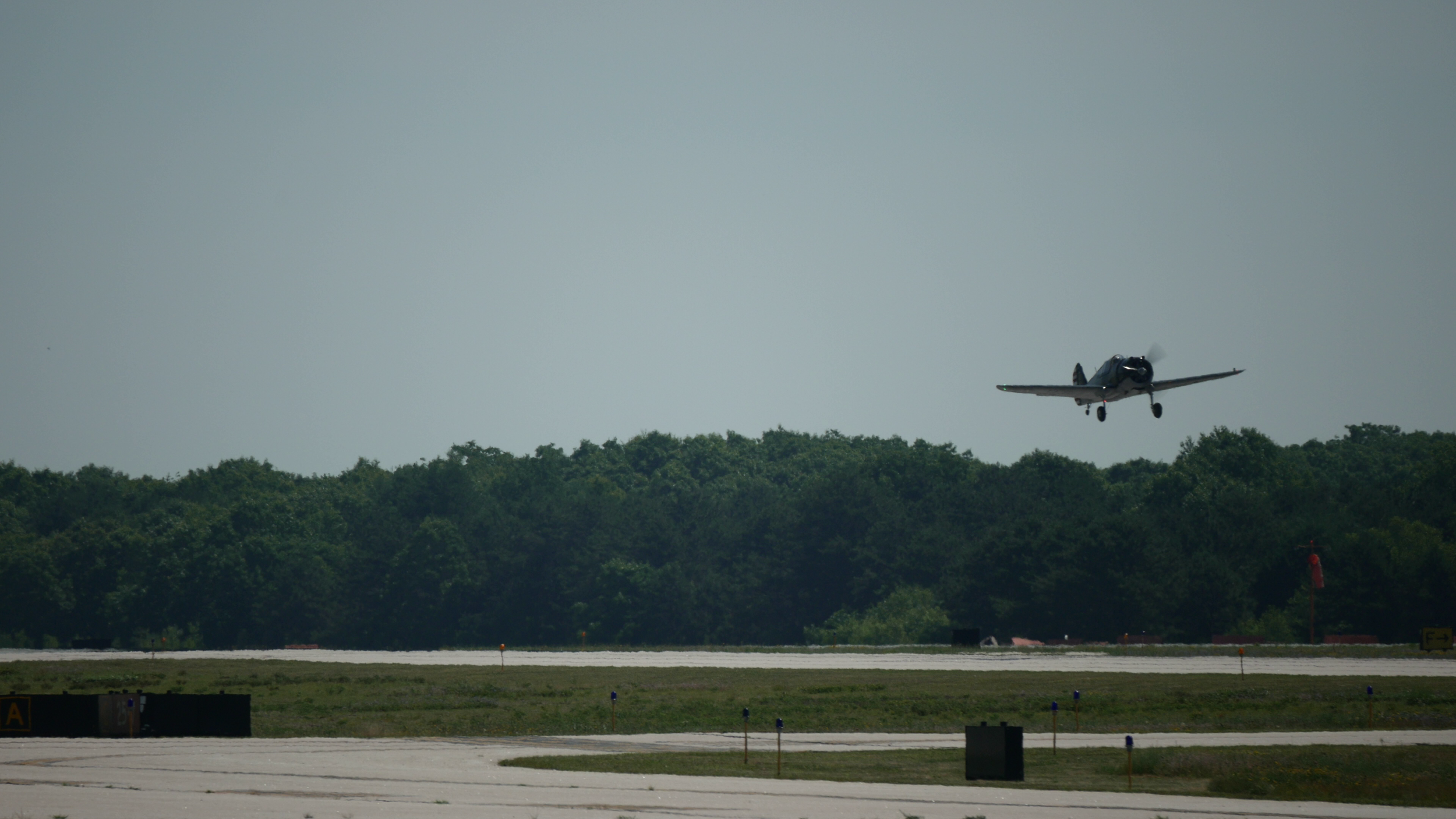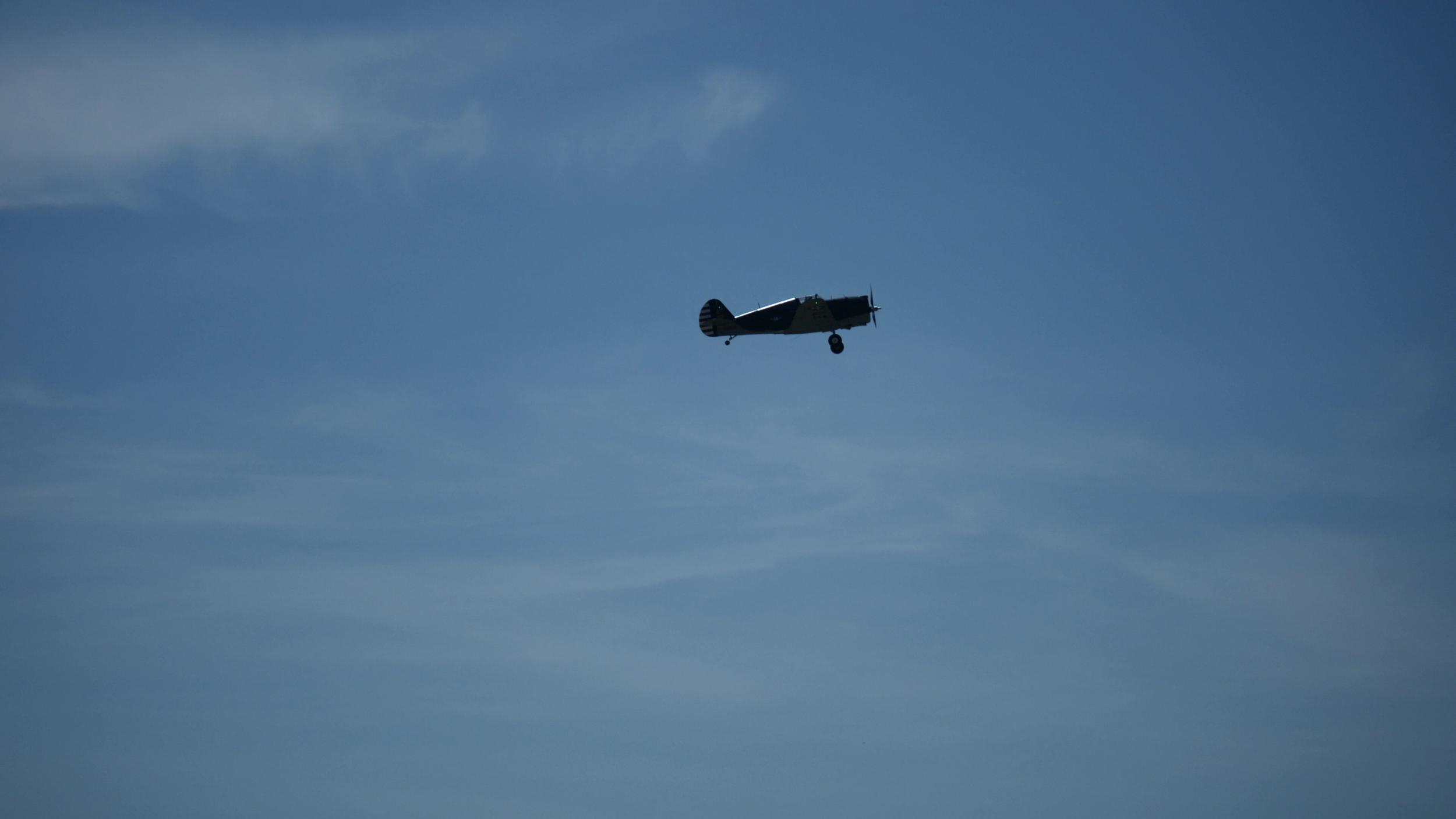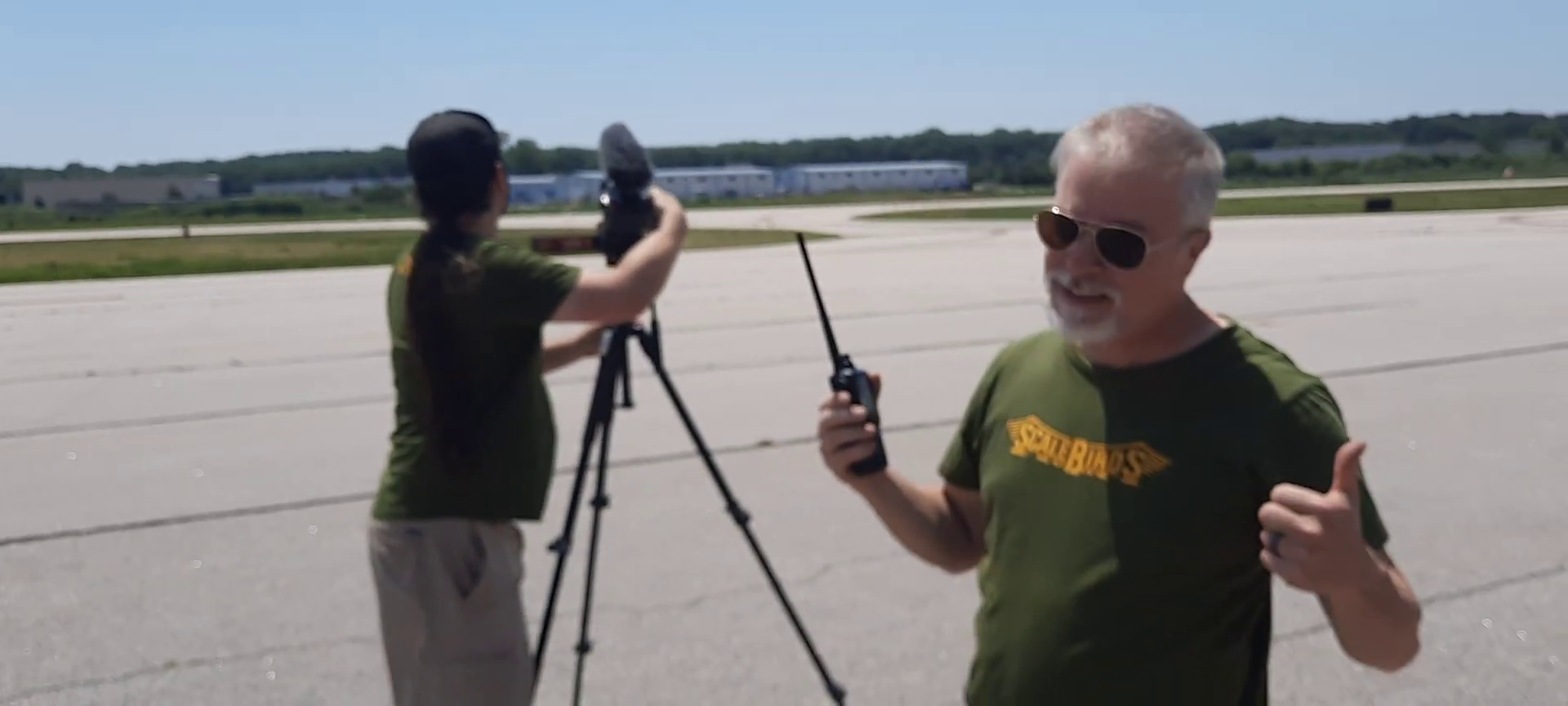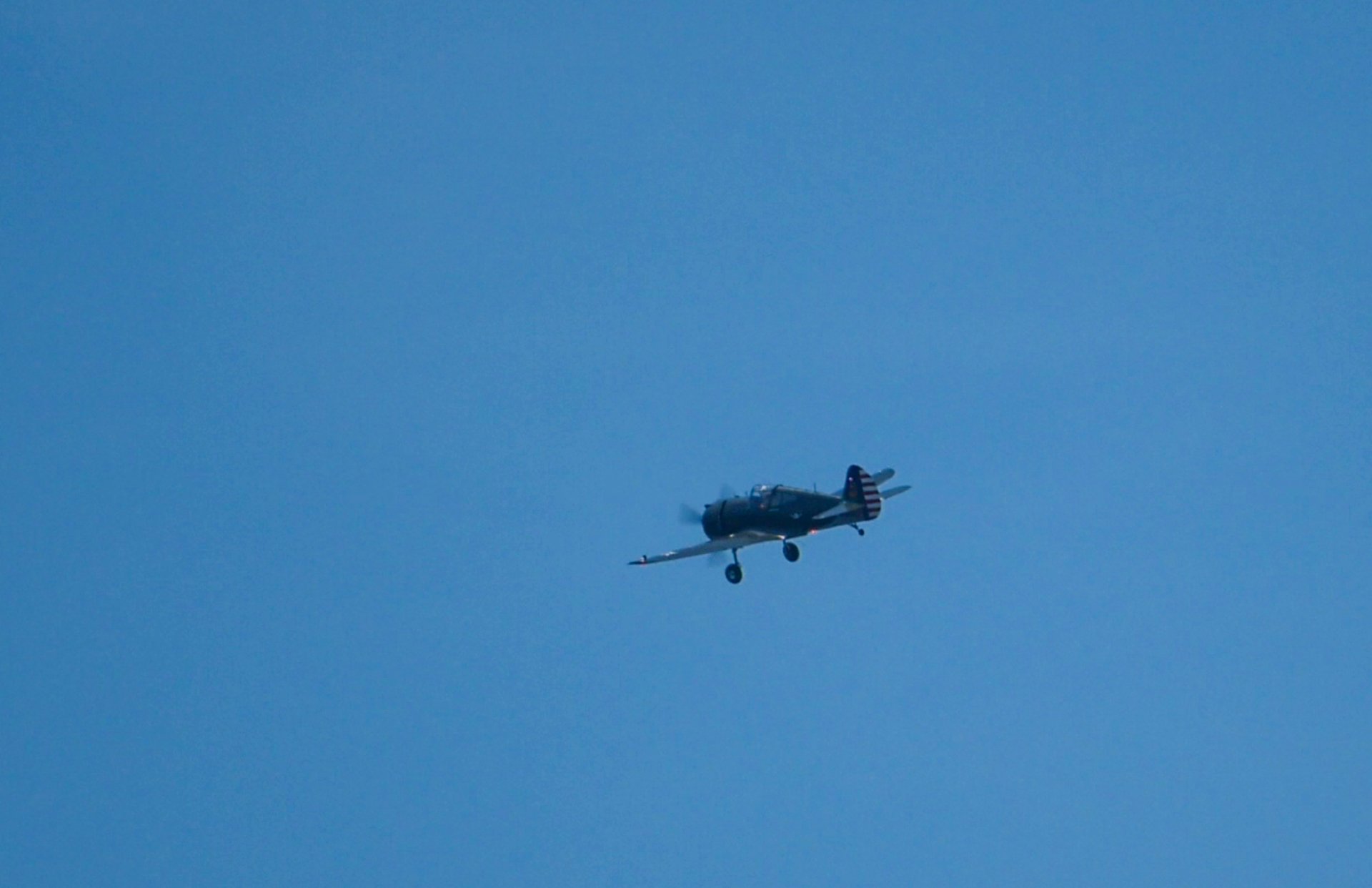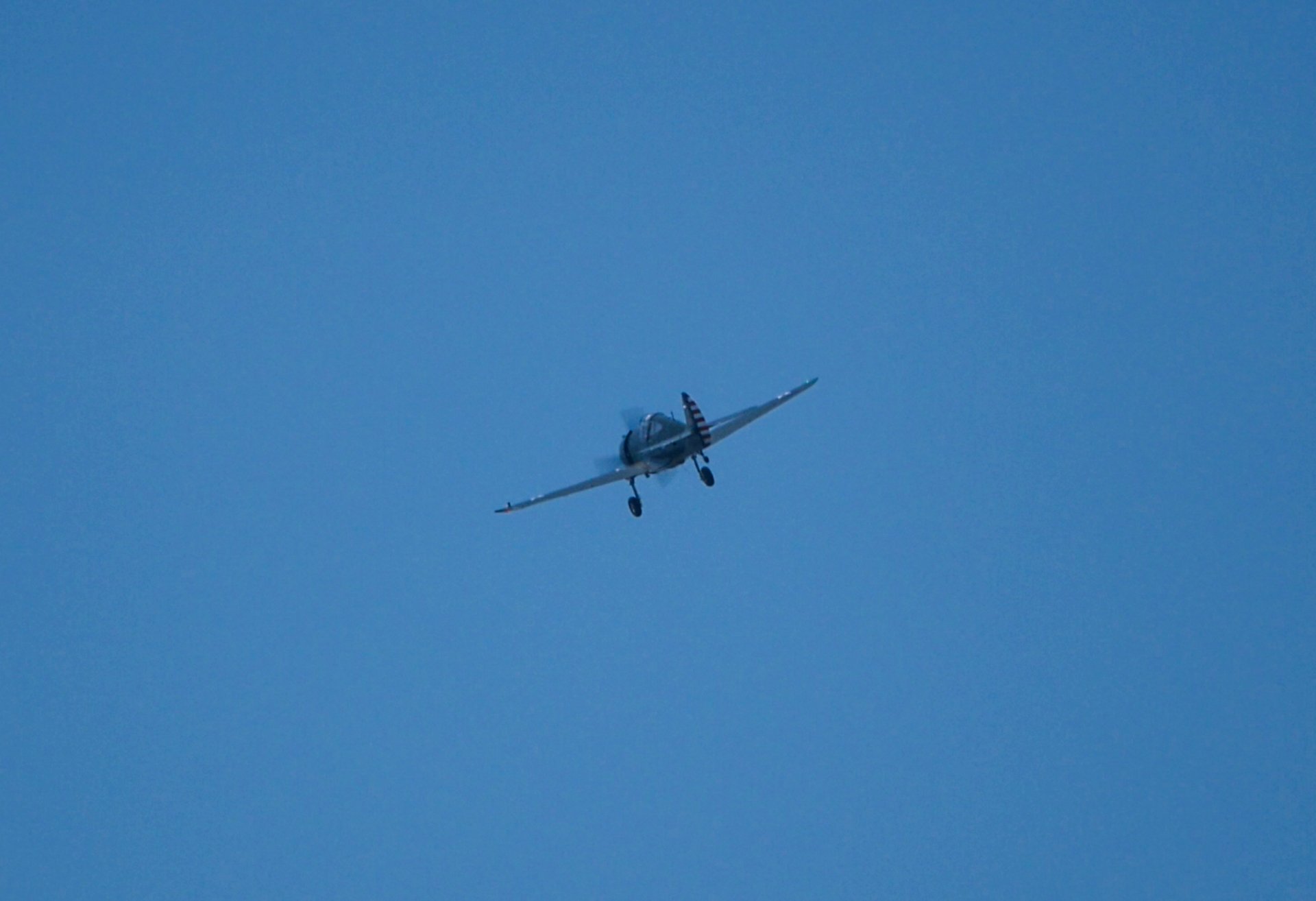AirVenture 2022
Wow! What a airshow! Oshkosh AirVenture 2022 was amazing for us and everyone who made it. We were jamming with people all day - every day from the moment we arrived and had to setup and reassemble the plane till the show was history. We had two interviews with media folks and several photo shoots and video shoots. We had hundreds of people asking about the P-36 and P-40 and many have been following us for years. Great to meet you folks! We took several deposits and a bunch more are interested and following the test flights. We had customers from almost everywhere on the planet. Notably - UK, Germany, Israel, Uruguay, Brazil, Australia, Mexico, Romania, Canada.
We also sold three engines and took deposit money during the show - a first! Normally, we get no sales at a show and several months later we get them. This is great news and Im happy to report it. We had Ted and Nicole Myers help us with engine questions as they are Verner Motor dealers from Missouri. That was a huge help as we were dealing with the kit plane questions. Verner gave us permission to sell five 3V engines at the show and together we sold all five. I wish we could sell more - they are popular.
During the show, Scott, Karen and I camped at our booth by using the trailer as a camper. We set it up with an office where Scott worked on brochures and printing. A refrigerator, microwave, coffee maker and beds with a dressing area. Pretty comfortable I’d say. The air conditioning worked well except in the middle of the day. We used the homebuilt camping area shower trailers and then the air conditioned bathroom trailers near the Roxy food paviliion. Not too bad. Scott said it was much less hectic than driving to and from a house - I have to agree.
The trailer is 20ft long and 8ft wide box with a 2ft V extension on the nose. 7ft high. That is a lot of space and we used up every bit of it. Paul made it to the show at the beginning of the week for a couple days and stayed at a hotel. His uncle and grandfather met him at our booth and he got to spend some time with them. Aaron and Shin came on Thursday afternoon and tented next to the trailer under the 9x9 canopy. The exhibit area is pretty cool place at night. I was expecting more bugs at night. So glad there was hardly any! There are many vendors camping at their booth spaces so we were not lonely, but it is quiet. But you have to get to bed early because the trash trucks and porto-potty cleaning trucks start in around 4:30 am and hard to sleep through that racket. All evening we could hear the bands playing and shouting at the crowd over at the SOS bar area until about 11:30 or midnight. We even went to the SOS bar on Friday night after some dinner. Packed with aviators! It was fun, but crowded. First time we had gotten over there in all the dozens of Oshkosh’s I’ve been to. Will hit it again next year I think.
The trip to AirVenture was thankfully un-eventful after I backed the trailer into my hangar door when we were all packed up and hitting the road. Arrrgh! The trailer was fine. Door has a puncture wound. I hope I can fix it without too much fanfare and State employees lurking around. The highways are full of pot holes and washboard surfaces. Terrible thing to do to an airplane. The trip home was similar and uneventful as well. Thank the Lord! Get this: we packed-up the trailer Sunday night after the show and got a hotel adjacent to the Whitman airport. The cost went from almost $400 a night during the show to under $100 a night. Oh well, it’s Oshkosh - just throw money at it!
We are now catching up on all the neglected things as well as lost hours from the day job. The Navy wants it’s toys! The plane is hopefully going back together this weekend and we have a plan for modifying the oil vent system to hopefully fix the excessive loss of oil from the breather. The All for Aviation guys in Czech Republic are having the same issues with their Mitsubishi A6M replica with a Verner 9S. They fixed theirs and we will be able to follow suit. Their fix was to make their system very similar to Steve Wolf’s - which is working real well. Copy the best I say!
The plan forward is to get her flying asap. Get some videos and real flight performance data. fly off the 40 hour phase 1 test period. Adjust the models as needed and progress toward making our next prototype and the beta kit parts. Scott is already adjusting the models for the P-40 variant as we got a lot of questions about it. In our mind, the P-40 is almost entirely the same, but we need to show how it will look and we are on it. It is great to get the questions and feedback that is the AirVenture experience.
